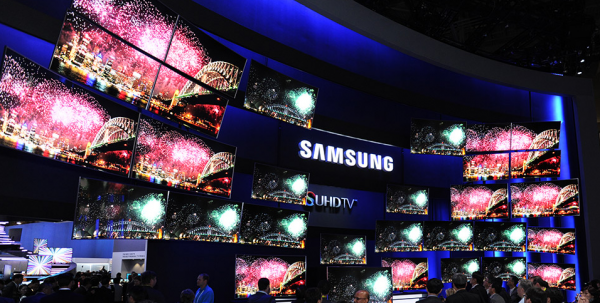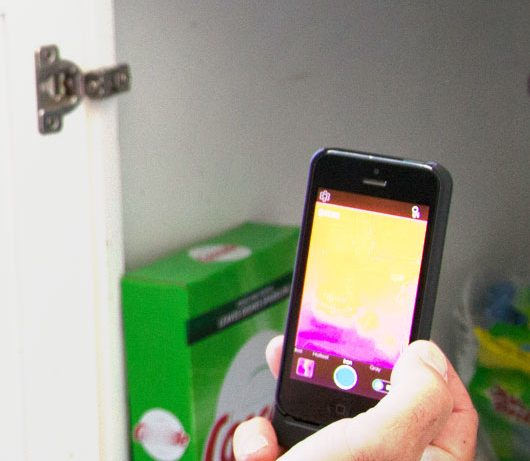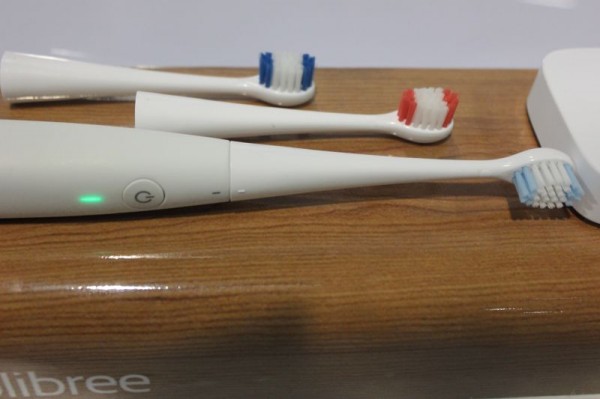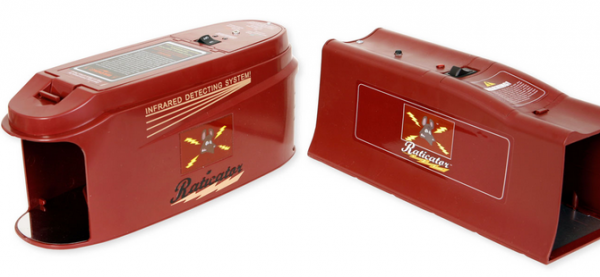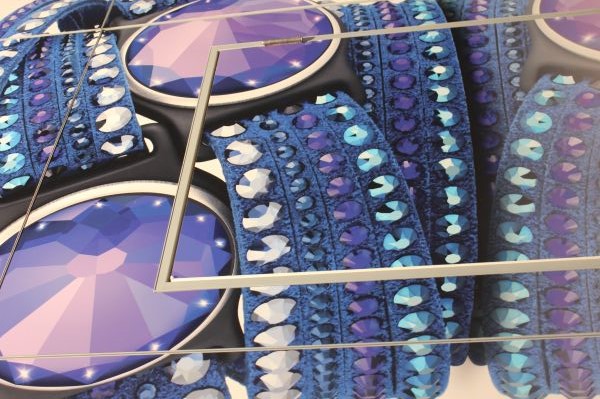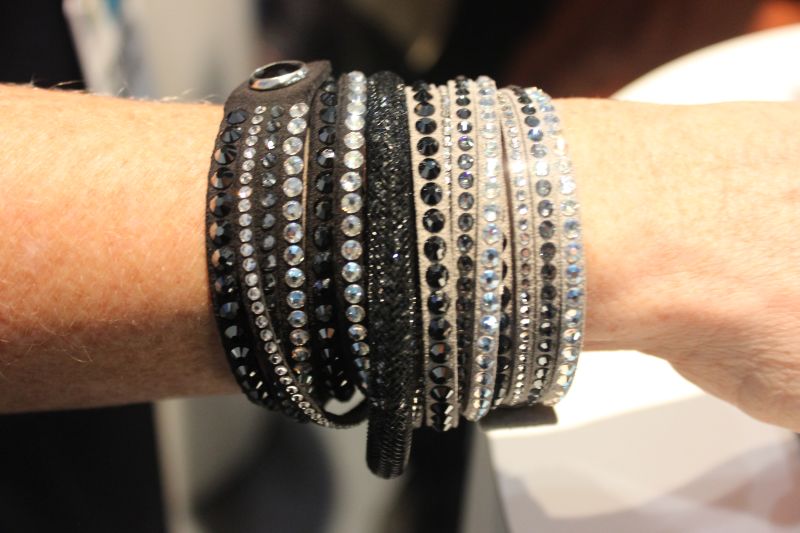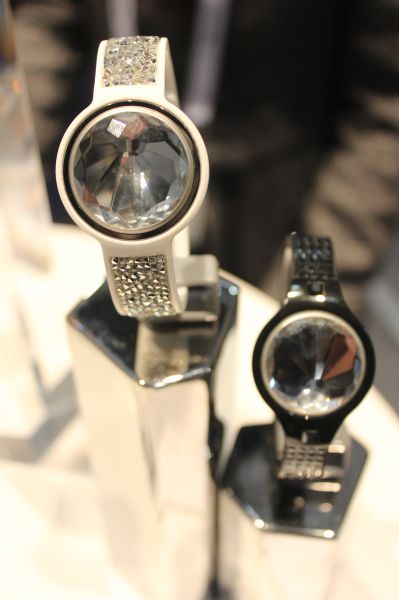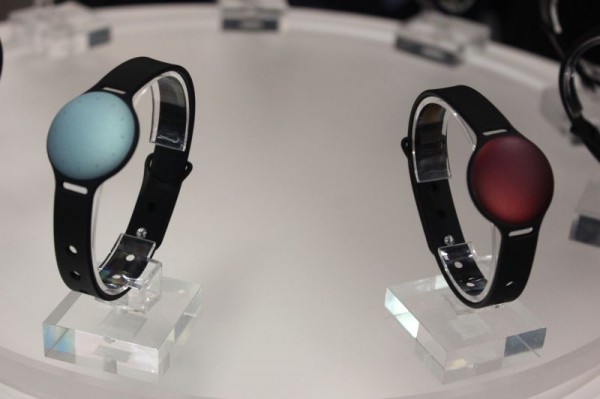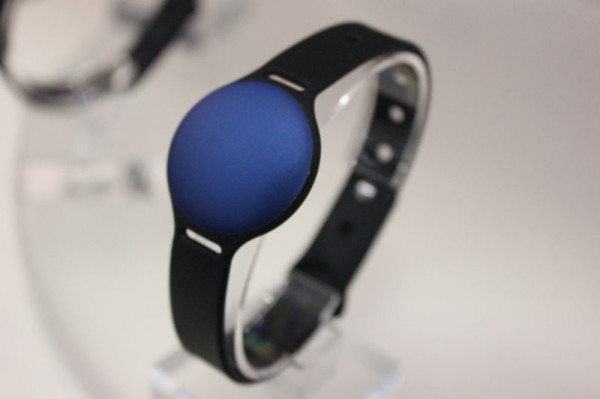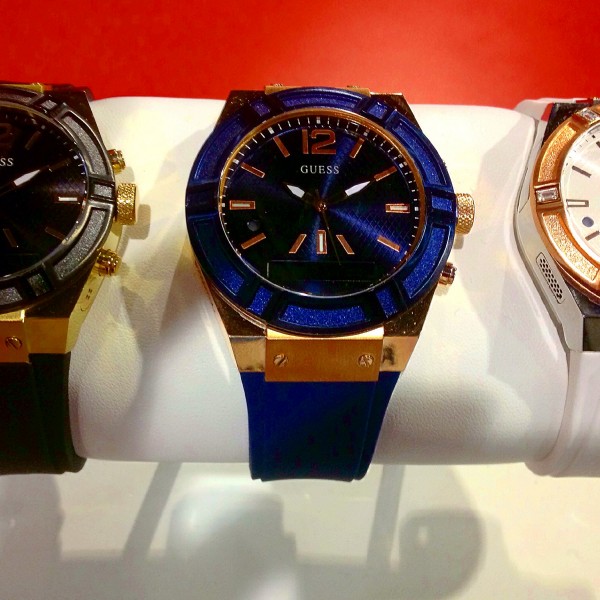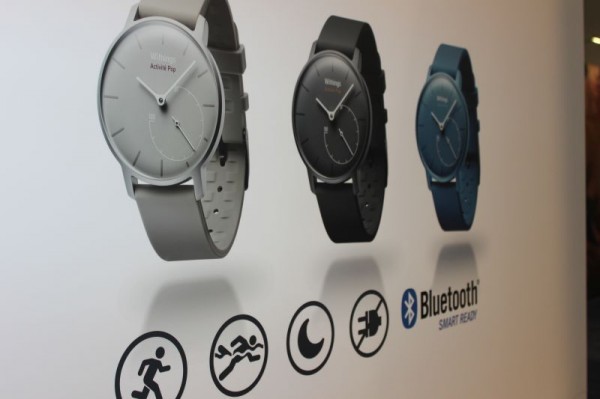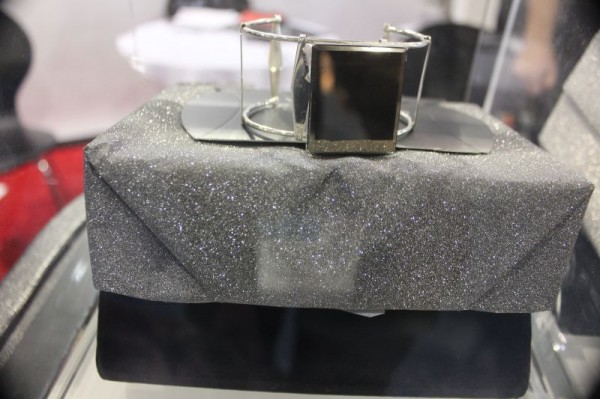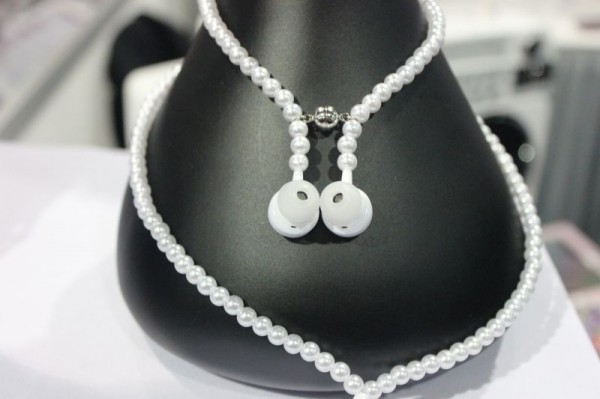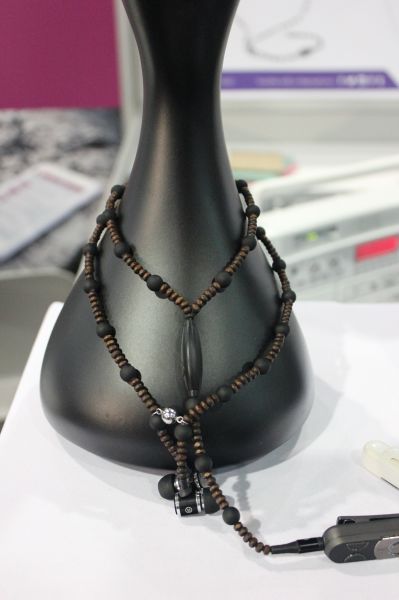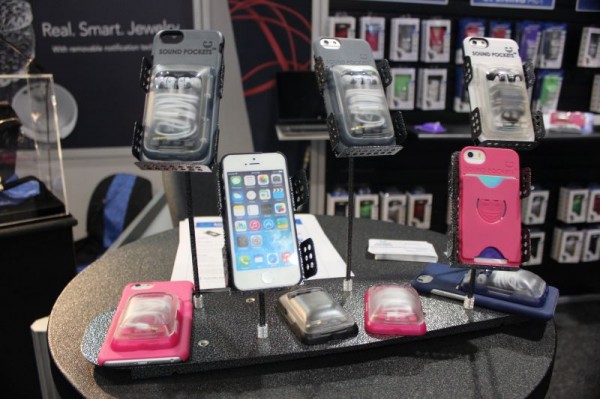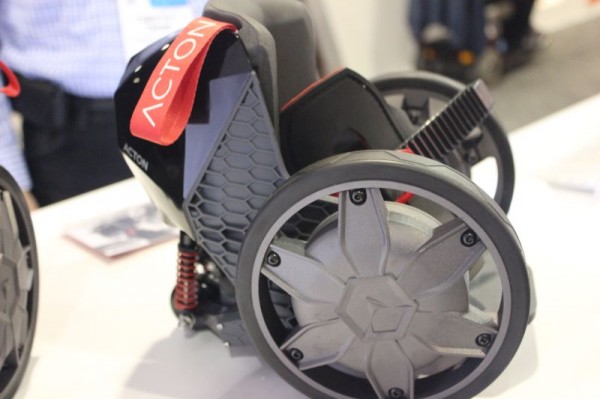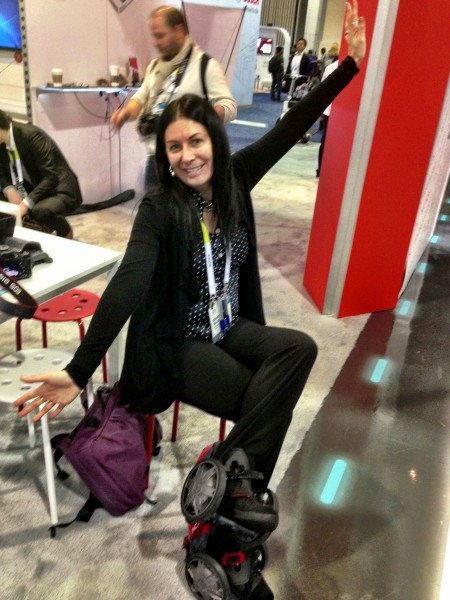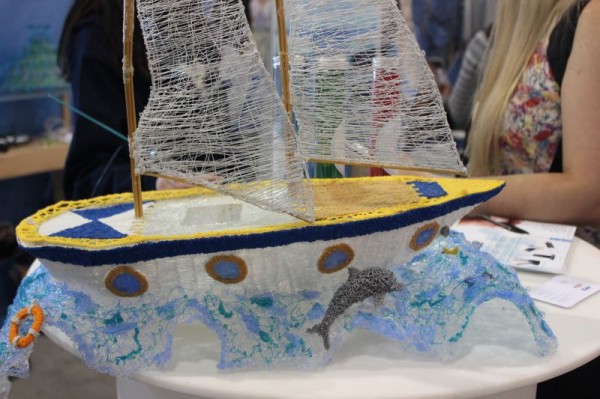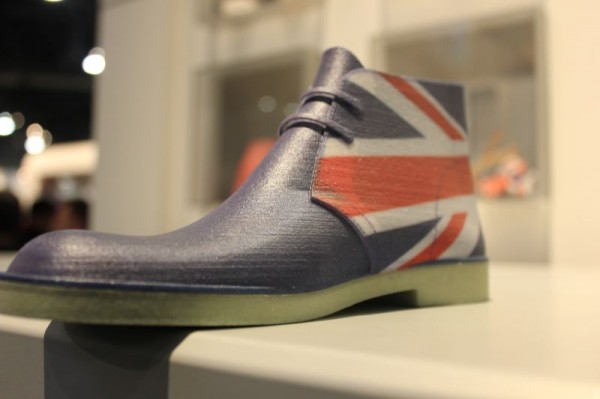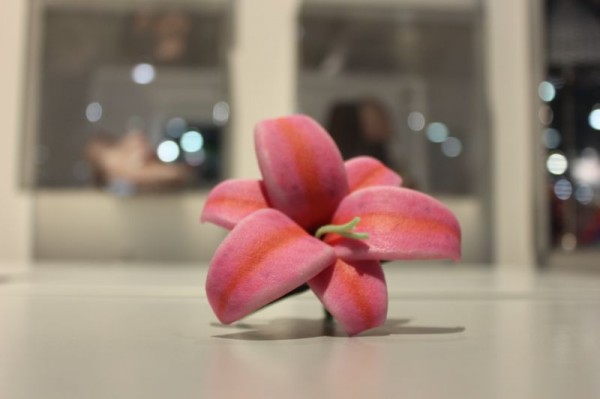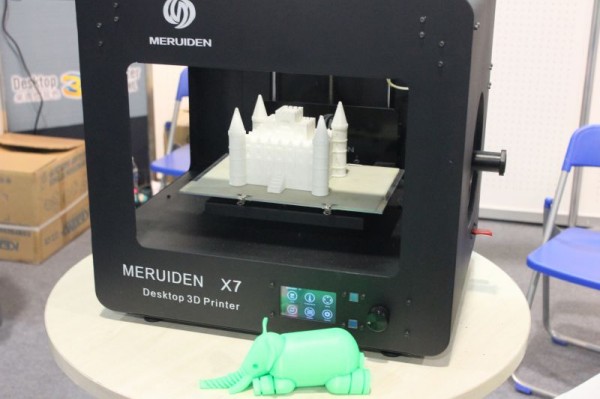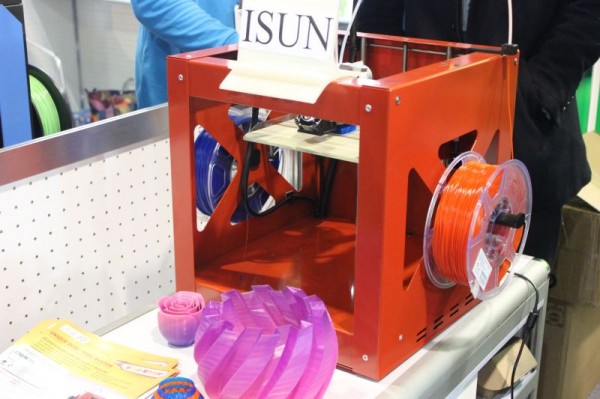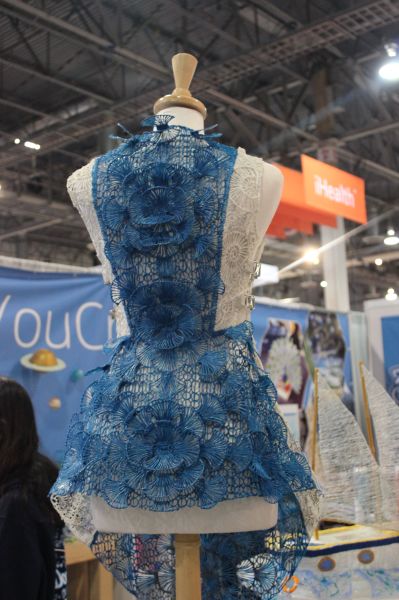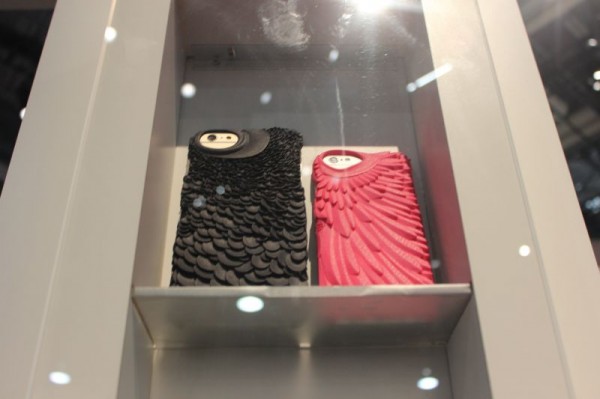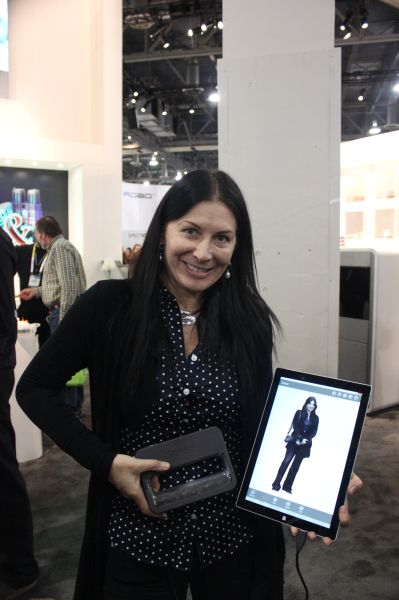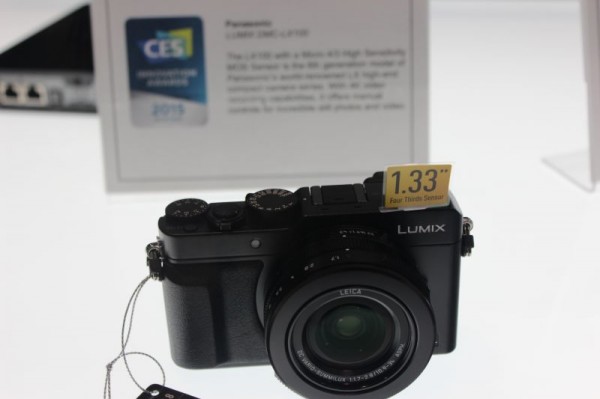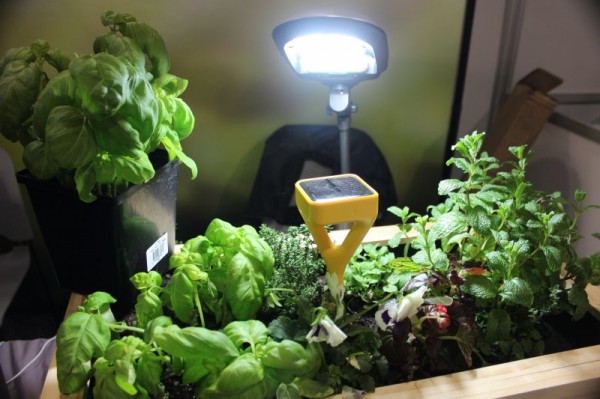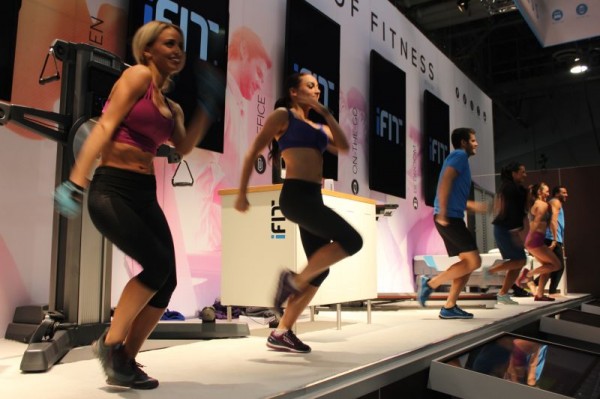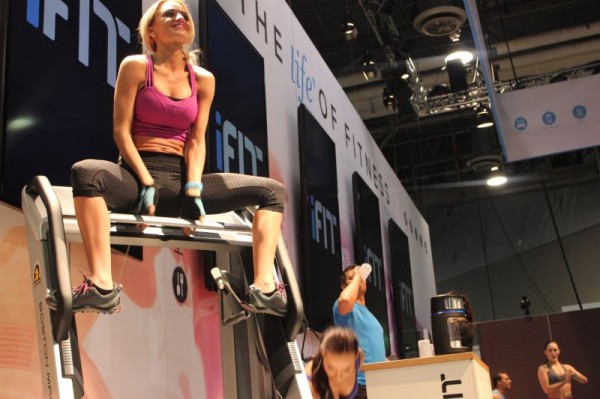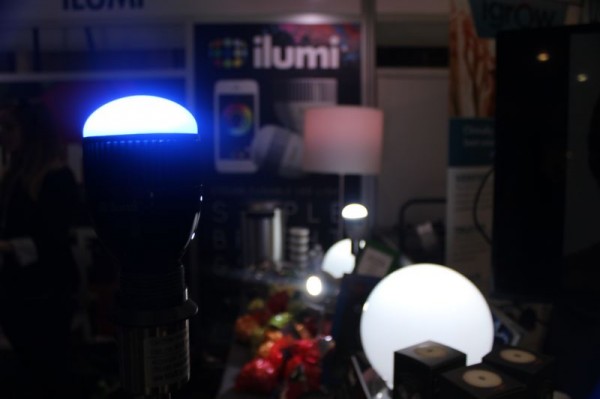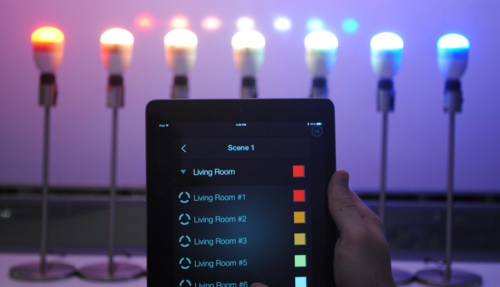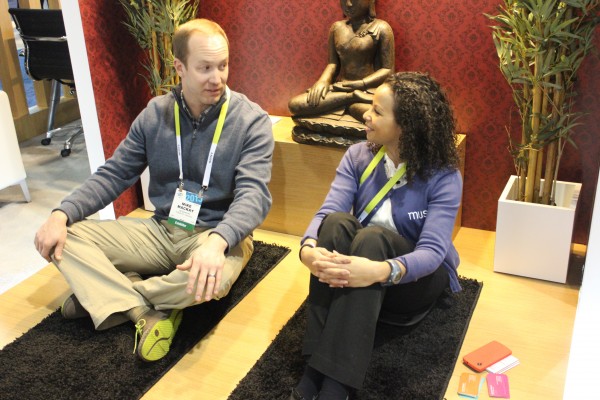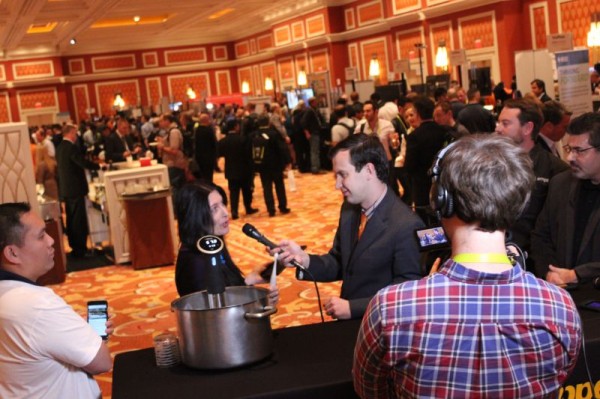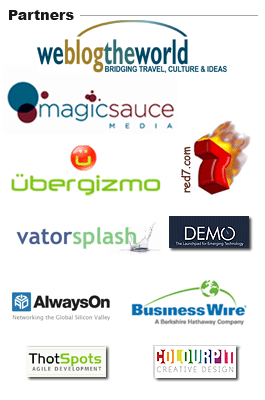About Us
Traveling Geeks is a consortium of entrepreneurs, thought leaders, authors, journalists, bloggers, technology innovators and influencers who travel to countries to share and learn from peers, governments, corporations, and the general public to educate, share, evaluate, and promote new, innovative technologies. The initiative was founded by Renee Blodgett and Jeff Saperstein in 2008.
Trips are funded by sponsorships from corporations, organizations and governments. The first tour was sponsored by the Israel Ministry of Foreign Affairs, a trip that successfully marked the proof of concept that could expand to other countries around the world.
Read MoreFun New Travel Apps Tout Their Horns at Web Summit
At the fourth annual Web Summit event in Dublin from November 4-6, 2014, 22,000 people from around the world came to see new gadgets, get cool demos and hear the latest scoop on where technology is heading. Since we love travel, we decided to spend a little time learning about what some of the new travel start-ups were up to on the show floor.
While we mostly cover news and destinations for the luxury traveler, we threw in several apps into the mix that would be useful for hotels, airlines, property and guest house owners and even boat owners.
What I found fascinating was just how diverse the nationalities were across the board — there are some creative apps coming out of Portugal, Israel, Germany, Finland, Greece, the states, France, England, Ireland, Italy, Finland, Russia, Brazil, Austria, Holland, Belgium, Australia and even Monaco and Malta, among countless others. I put together a curation of some of the apps I came across during my scouting exercise across three days at this massive technology event.
Yonderbound is another B2B solution. Based in of all places Monaco, the female founder team (uncanny fact but they’re both named Barbara), is trying to help travelers get a kick back for sharing their knowledge and travel experiences. Millions of people share their travel knowledge on popular sites for free and Yonderbound thinks you should be rewarded for it — up to 70% of the net revenue you produce.
TripFlr is a new travel app from London-based co-founder Jerome Lapaire and team. The pitch? What else but “travel with flair.” Remembering the name of a bar or a shop is often a pain. City by city, you can now store your favorite spots and all the places you have yet to discover in your private Triplogs!
Georama is a real-time vicarious travel platform. They help people experience the world anytime, anywhere. Georama’s technology allows viewers to explore a destination in real-time by interacting with a guide who is live streaming their perspective.
They’re targeting tourism organizations, hotels, airlines and more to help them inspire and engage with prospective travelers around the world.
The Find Out App helps restaurants, nightclubs and bars interact with users on their key information to improve the experience they have on the ground. Based in Paris, they only started out about a month ago so are trying to add new venues as quickly as they can, and will expand to other cities as things progress. Guestvista is aimed at social travelers. Travelers can learn about useful hints and tips from others. The company is based in Ireland.
InLoco gives you an opportunity to travel with locals. This Brazilian-based company has been loading their content from Brazil and will be adding European users soon. The idea is to discover non-tourist sites, meet new people and find more interesting alternatives by traveling with a local resident.
Plan Chat lets you create a plan for anything with content from everywhere in a familiar centric manner. Hotel Booking say they are the best hotel search engine. It looks a bit like an Expedia but for hotel booking only.
Guest 2gether out of Austria, is a social network for hotels. They create a new vacation experience for each customer.
When you’re at your hotel, you can meet up with other people staying at the same hotel and meet up to do activities together or dine together based on common interests.
BookBedder say that they can make hotel booking even better. I chatted with Swiss-based co-founder Yannick Blondeau at the event. BookBedder is a collaborative hotel booking website where hotels and guests join forces to get reduced costs and better deals on hotels.
Quicket is a mobile travel service that combines existing flights, hotels, cars, fees and air services for independent travelers.
BookGreener gives travelers lists of authoritatively rated eco-friendly hotels from around the world. Based out of Indonesia, the ever so eco-conscious founder Alexandre Tsuk wants to change the way people think about hotels and make travelers more conscious about where they stay. What else is cool is that every time a traveler books a hotel, BookGreener plants a tree.
Social Airways has a great idea. The Cyprus-based founder and CEO Stylianos Lambrou wants to help flyers get more value from others on their flight, every time they fly.
It’s a social flights platform that connects people who are on the same flight, so they can share rides, information and anything else that might be useful. I love this and hope it sticks.
Conichi say that they plan to revolutionize the interaction between hotels & restaurants and their guests. Through the Conichi App, guests are automatically recognized and their visits are tracked in order to provide optimal customer service.
In addition to being able to greet guests personally, their preferences are stored so hotels and restaurants can grant them personalized recommendations and provide additional benefits that best suit their interests and preferences.
Big-data, personalization and smart-analytics are combined to optimize the guest experience and explore new levels of guest loyalty.
Family Vacation is a cool app based in Bucharest and New York that helps families book travel. Think of it more like a marketplace where families can find, customize and book personalized vacations provided by locals from around the world.
Inn Style is a web based alternative to irksome spreadsheets and dusty diaries for all kinds of accommodations owners — they tout, that it will be the easiest way for you or your clients to start taking online bookings.
Hero & Creatives is run by a woman CEO based out of Portugal. I love this idea – essentially they match you up with guide photographers in your destination of choice. How cool to explore the world with a local photographer who can show you an entirely different perspective on a country or city.
Direct Hoteling is a database of hotels and other businesses providing accommodations so you can find the best offer out there.
Travel Myth is another hotel recommendation engine, but one which is based on your interests. Based in Greece, this company’s app could be really useful if it sticks – we need more granular ways to search, discover and book hotels based on our personal likes and dislikes, so I really like the idea.
Gloudio is a fun idea out of the UK. They are combining traditional pre-recorded geo-located audio guides for well visited sites like museums with crowd-based audio content for an enhanced user experience when they’re on the road.
Exploranza out of the Czech Republic hopes to help travelers discover hidden gems. There’s no doubt we need more sites who can curate experiences for travelers in a much more efficient and high quality way but I’m not sure they have quite nailed it yet.
That said, they don’t plan on charging tourists for this curated premium content and they hope the value will get better and better over time. Kymboo.com’s tagline is Tourism 4.0.
Based in Spain, they say they are the first professional booking system for hotels, resorts, cottages and property owners where they can share marketing of their products.
Boatsetter out of Florida, hopes to offer a safe and secure way for boat owners to charter out their vessels to selected clients. Each charter includes state-of-the-art insurance, on-water support provided by BoatUS and US Coast Guard licensed captains available to hire.
Nifty idea but probably pretty niche, at least initially. The idea is obviously that customers will see value-add immediately since they can subsidize the cost of ownership and have a better maintained boat over time.
Roaming Byme is based in France and their team hopes to solve the roaming cell phone issue. They tout themselves as the traveler’s mobile operator, where they hope to solve traveler’s roaming bill shock issues.
YapQ, based in Israel, has created a mobile app that tells you what’s around you. They curate destinations and activities you want to do frequently in a city or town, such as a well known museum. The other beautiful thing about their app for a traveler is that you can use it offline and get the same benefit.
Pimp Your Stay with a team out of Malta, has certainly found a memorable name that is suggestive but also fun. They provide hotels access to detailed guest data (with opt in permission from the guest of course), so the hotels can add extra value to their stay.
Now, with additional personalized information on a guest in advance, hotels can turn a standardized service into a truly personalized stay.
Naymit, out of Germany, makes places findable, allowing you to create a one word address so visitors can find your front door or any other location in an instant. Imagine in the future that you might be able to type your “Naymit” name into your car navigation system and it’ll just work.
Let’s Open Now is based in Holland and is trying to help travelers find what they’re looking for that is open when they need them. Outria out of Belgium, crowdsources events, information from members and social networks and they distribute that information to new members.
Green Hopping is all about green travel. Through their site greenhopping.eu, you can browse, discover and get inspired by green travel ideas and places.
Cyclister, you shouldn’t be surprised to hear, is based out of Copenhagen Denmark, a city of cyclists. You can list your bike on Cyclister, decide on the price you want to rent your bike for and make money off each rental, a bit like the services that allow people to rent out their cars when they’re not in use. This is certainly useful in cities where cycling is a preferred way to get around like Copenhagen for example and I could also see this working in Amsterdam and Montreal.
Next to Me, out of Italy, is creating an accurate submeter indoor navigation system that allows users to locate and access their services within their location.
Audio Trip, out of Poland, is a storytelling app that changes your smart phone into a personal local guide.
Cruise Me allows you to search, discover and connect, all within the cruise world. It’s still a bit hush hush as they haven’t officially launched yet, but apparently the app from this Florida-based startup is slated to go live sometime in January or February 2015.
Share My Taxi, based out of Munich Germany, is a blend of Uber and Lyft. They use professional drivers and there’s also a mobile app that makes traveling with taxis, Uber, Wundercar and others social and green by sharing a ride if its available. This is also more economical for travelers who want to get from A to B safely.
Cityist has started out with Paris-based content since that’s where they’re currently based. They tout themselves as the next Generation Of City Guides. They are a website, offline mobile app & marketplace that turns tourists into local experts.
Local Fixer’s Co-Founder Elliot Costello and team are based in Melbourne Australia. Finally, a fun travel app from the Aussies. It’s a bit like a LinkedIn for the travel sector, where you can include offers in your profile, ranging from offering your pad to rent for the week, or posts of other things you can offer travelers, such as bikes, your car to use, or things you’d like to sell which might be useful to them during their stay.
Deal Broker is a B2B solution that is targeting travel suppliers and help them find great tours and activities for travelers. They customize the content under the tour operators brand/logo that they can then send out to their travel prospects.
DealBroker can also send mobile notifications through social media, text or email. Deal Broker specializes in relevant offers around a specific destination, such as tours and activity offers. They are leveraging the trend that tour operators and activity suppliers want to cooperate and need easier ways to do so. It would be a great multi-touch solution for example, for rental car companies or airlines.
Tziip is based out of Finland and their pitch is a bit like like Lyft but more social. In other words – get a ride and/or share a ride.
Group Booked from Ireland, touts themselves as the AirBNB for groups, but for more than just accommodations. Another value-add they say is that while they book for groups, they’ll take individual payments, making it more flexible for groups of people to book.
Hudway is a mobile app that helps drivers follow directions in fog, snow, rain and at night via road windshield projections.
Tour Plus, based out of Malaysia helps you plan, enjoy and share your trip by creating an automatic itinerary for you. In other words, you put the places you want to see into their app and they’ll map out the best way to do it for you. You can also share that itinerary with others.
Travel Appeal from Italy, allows hotels to control, manage and improve their reputation.
BELOW SHOTS: On the Show Floor at Web Summit 2014 in Dublin
Photos of apps from vendor websites, 1st Photo taken from Travelblat and photos from Web Summit Show Floor from Renee Blodgett.
Surf Summit, Where Technology, Entrepreneurism & Surfing Meet
Imagine a conference that combines surfing, technology and entrepreneurship on Ireland’s magical wild coast. A subset if you will of Dublin’s Web Summit, the first ever held Surf Summit brought 200 attendees to the west coast of Ireland to join in discussions, surfing and other adventurous and cultural activities.
When I told people I was going to an event where they planned to surf in Ireland’s coastal waters in the middle of November, they looked at me as if I was a bit mad, unless of course they happened to be Canadian or from a Nordic or Celtic country.
You see, the Scots, the Welsh, the English, the Scandinavians and the Canadians thought this sounded perfectly normal, for when you come from a country where it is cold and rainy, you need to have a “can-do” attitude regardless of the climate or you simply won’t experience anything at all. I learned this from living in England many moons ago and it has made me a lot more resilient because of it.
Iceland is another great example of where their personal and cultural life infiltrates into their business life in a positive way and adds to the entrepreneurial spirit, rather than detracts from it. I was born into water — in other words, I grew up on lakes, was thrown into one before I could walk and was waterskiing by 5.
None of that quite prepares you for the cold waters of the Atlantic, however the enthusiasm of the entrepreneurs at the Summit made it easier to embrace it all. Below is a beginner lesson on the shores of Keel Beach on Achill Island which is part of West Ireland’s Wild Atlantic Way.
Achill Island is the largest island off the coast of West Ireland. The island is a magical place where the light seems to bless the Irish coast regardless of whether its foggy, cloudy, raining or clear blue skies and sunny, a rarity, especially in November. That said, we had our moments.
Other adventurous activities took place as well such as zorbing, rope climbing, zip lining, and archery thanks to the guys at Wild Atlantic Way Adventure Tours.
I had oddly never heard of zorbing and when they told me it involved getting thrown into a massive inflatable ball and being thrown vigorously down a hill, I was thankful I was on the archery team. That said, when I walked past the ball on my way to Archery, I couldn’t help but be mesmerized, so much so that I looked at Jenni, the Finnish girl I was hanging with at the time and said, “let’s do this.”
Next thing you know, we were inside a massive inflatable ball, strapped in on all sides and yes, thrown down the hill. Needless to say, it was a blast and our screams surpassed all the others we were told.
I decided to go ziplining as well, since I’ve always loved the sport. While it may not have been as invigorating as the times I flew through the jungles of Costa Rica, Ecuador or Hawaii, it was fun nevertheless.
Below, people threw themselves towards a target hanging from a tree, with both themselves and the target connected to ropes.
Archery wasn’t quite like I had learned it as a child at summer camp in the Adirondacks of upstate New York.
Instead, there were two teams and rather than shoot an arrow into a target (speaking of targets, check out my most recent encounter with guns in Kentucky), you shot rubber objects into the opposing team.
I felt as if I had signed up for a history lesson on what it was like for the Scots to win a war before there was ammunition. Only in a Celtic Land I was thinking to myself throughout the entire process, but with a smile on my face.
Speaking of Celtic Lands, it wouldn’t be a conference in Ireland if it didn’t have plenty of beer and pub culture.
On the main drag of Westport lies a few renowned pubs my old friend Peter told me about, which is worth having a pint or two if you make it to Westport.
Enter McGings on High Street and Matt Malloys on Bridge Street, both popular favorites among locals. Matt Malloys is known for its live traditional Irish music and Matt has purposely kept the pub small, so that they can congregate – as they do, from all 32 counties – to enjoy a pint and a tune.
At the evening sessions of the event, they served Guinness on tap which is always a treat, since regardless of whether you only like Guinness or love it (I’m in the last category), it always tastes better in Ireland.
Ask anyone who has been to Ireland and is a regular Guinness drinker and they’d have to agree. In the midst of all of these physical activities which we never seem to incorporate into our more stationary tech events in the states, was a series of talks over meals.
We heard from John Huikku who has done everything from lighting and compositing, to 3D matte painting, environments and look development. He spent 15 years working at Disney and worked on Lord of the Rings: Return of the King in New Zealand of all places. Edgars Rozenthals talked about drones, Airdog and Kickstarter, Andrew Cotton talked about surfing but also big ideas and equating his daredevil life riding the waves (such as him tackling the surf created by the St. Jude’s Storm in Portugal recently), to taking risks and chances in business and life in general.
While you may only think risk behavior on waves that could kill if you hit them wrong may only be a male choice, think again! Anastasia Ashley, who was drawn to the ocean as early as she can remember, was body boarding by age 4 and surfing by age 6.
She has since become a prodigy and has won over 200 amateur events, including the NSSA National championships at age 16, before she turned professional full time.
She loves the immediacy of digital media for reaching fans. She says, “I could be shooting something for a brand or a magazine and it can be up within a few days” which is a great way to deepen the engagement.
She adds, “when you’re in the media, you read everything about yourself,” but has learned to love it all — the good interactions and the bad.
When you’re a celeb female surfer and do a twerking video, you shouldn’t be surprised when it suddenly goes viral and gets 7 million views.
While there are lots of positive sides to what she has accomplished, she acknowledged that “females in any sport get the short end of the stick,” referring to men who still tell her she doesn’t deserve her fame and notoriety.” Jimmy Gopperth and Jonny Golding talked about what you can take from rugby and apply to business, of which trust and teamwork were his top two.
Decision making was another biggie, particularly making decisions under pressure, which happens as much on the field as it does in and out of the board room. Niall Harbison encouraged people to take risks. Being a true entrepreneur says Niall, means that you can’t be afraid to fail.
Other tips to entrepreneurs included banging the door down no matter how hard it seems, not taking no for an answer, having incredible focus on your main goal, instilling amazing culture into your business and thinking globally beyond your own geographic borders.
He has high ambitions for both PR Slides, which recently raised €500,000 in funding, and Lovin’ Dublin. The latter sells Dublin as a hipster paradise somewhere between London, New York and Berlin, but it has been accused of loving Dublin and not Dubliners.
He said that he learned a lot going through this process, including that even if you hear people on the street using words like ‘knacker’ and ‘junkie’, it doesn’t mean you should write it. Below, the film panel…
We also heard from Ireland’s prime minister Edna Kenny who talked about a very proud Mayo county.
He stuck around for awhile to chat with entrepreneurs, take photos and share what he does well – storytelling with a dry and charming sense of humor.
Below is a snippet from his talk.
And, of course, there was traditional Irish music wherever we turned — from the classic pubs in downtown Westport and nearby villages to our evening sessions at the Hotel Westport, which is known for hosting conferences and events.
Below is a snippet from their playing.
What was so unique and special about Surf Summit was its intimacy and its location, which almost has spiritual qualities. The nature, the air, the skies, the rainbows, the breeze, the sand, the long dry grass – all of it was magical!
Combine that with a couple of days of fascinating conversations about start-ups and entrepreneurship with founders from nearly every continent, and apps and products that cross a myriad of industries, from gaming, drones, digital entertainment and mobile social apps, to luxury, lifestyle, healthcare, travel, transportation and insurance, it was all there.
Ultimately, smaller and carefully targeted and curated events are going to win as we see a proliferation of tech events in the same on-stage session formats with crowds too large to make sense anymore.
I think choosing an out of the way location is also a great idea, since it shows commitment on those who sign up — and its not easy to leave, encouraging intimate talks and connections during the days and evenings.
And, in this case, I got to see a little bit of West Ireland, which was as beautiful and special as I thought it would be. Bravo Achill Island, Wesport, Wild Atlantic Way and Mayo County!
All photo credits: Renee Blodgett, except for Malloy’s pub, which is from their website.
Both video credits: Renee Blodgett. OTHER GREAT RELATED POSTS TO READ: See our other posts on Ireland, Food & Wine in Ireland (including Dublin restaurant reviews), Web Summit 2014, the Top Travel Apps from Web Summit this year and Ireland tech events and top Ireland festivals.
Surf Summit, Where Technology, Entrepreneurism & Surfing Meet
Imagine a conference that combines surfing, technology and entrepreneurship on Ireland’s magical wild coast. A subset if you will of Dublin’s Web Summit, the first ever held Surf Summit brought 200 attendees to the west coast of Ireland to join in discussions, surfing and other adventurous and cultural activities.
When I told people I was going to an event where they planned to surf in Ireland’s coastal waters in the middle of November, they looked at me as if I was a bit mad, unless of course they happened to be Canadian or from a Nordic or Celtic country.
You see, the Scots, the Welsh, the English, the Scandinavians and the Canadians thought this sounded perfectly normal, for when you come from a country where it is cold and rainy, you need to have a “can-do” attitude regardless of the climate or you simply won’t experience anything at all. I learned this from living in England many moons ago and it has made me a lot more resilient because of it.
Iceland is another great example of where their personal and cultural life infiltrates into their business life in a positive way and adds to the entrepreneurial spirit, rather than detracts from it. I was born into water — in other words, I grew up on lakes, was thrown into one before I could walk and was waterskiing by 5.
None of that quite prepares you for the cold waters of the Atlantic, however the enthusiasm of the entrepreneurs at the Summit made it easier to embrace it all. Below is a beginner lesson on the shores of Keel Beach on Achill Island which is part of West Ireland’s Wild Atlantic Way.
Achill Island is the largest island off the coast of West Ireland. The island is a magical place where the light seems to bless the Irish coast regardless of whether its foggy, cloudy, raining or clear blue skies and sunny, a rarity, especially in November. That said, we had our moments.
Other adventurous activities took place as well such as zorbing, rope climbing, zip lining, and archery thanks to the guys at Wild Atlantic Way Adventure Tours.
I had oddly never heard of zorbing and when they told me it involved getting thrown into a massive inflatable ball and being thrown vigorously down a hill, I was thankful I was on the archery team. That said, when I walked past the ball on my way to Archery, I couldn’t help but be mesmerized, so much so that I looked at Jenni, the Finnish girl I was hanging with at the time and said, “let’s do this.”
Next thing you know, we were inside a massive inflatable ball, strapped in on all sides and yes, thrown down the hill. Needless to say, it was a blast and our screams surpassed all the others we were told.
I decided to go ziplining as well, since I’ve always loved the sport. While it may not have been as invigorating as the times I flew through the jungles of Costa Rica, Ecuador or Hawaii, it was fun nevertheless.
Below, people threw themselves towards a target hanging from a tree, with both themselves and the target connected to ropes.
Archery wasn’t quite like I had learned it as a child at summer camp in the Adirondacks of upstate New York.
Instead, there were two teams and rather than shoot an arrow into a target (speaking of targets, check out my most recent encounter with guns in Kentucky), you shot rubber objects into the opposing team.
I felt as if I had signed up for a history lesson on what it was like for the Scots to win a war before there was ammunition. Only in a Celtic Land I was thinking to myself throughout the entire process, but with a smile on my face.
Speaking of Celtic Lands, it wouldn’t be a conference in Ireland if it didn’t have plenty of beer and pub culture.
On the main drag of Westport lies a few renowned pubs my old friend Peter told me about, which is worth having a pint or two if you make it to Westport.
Enter McGings on High Street and Matt Malloys on Bridge Street, both popular favorites among locals. Matt Malloys is known for its live traditional Irish music and Matt has purposely kept the pub small, so that they can congregate – as they do, from all 32 counties – to enjoy a pint and a tune.
At the evening sessions of the event, they served Guinness on tap which is always a treat, since regardless of whether you only like Guinness or love it (I’m in the last category), it always tastes better in Ireland.
Ask anyone who has been to Ireland and is a regular Guinness drinker and they’d have to agree. In the midst of all of these physical activities which we never seem to incorporate into our more stationary tech events in the states, was a series of talks over meals.
We heard from John Huikku who has done everything from lighting and compositing, to 3D matte painting, environments and look development. He spent 15 years working at Disney and worked on Lord of the Rings: Return of the King in New Zealand of all places. Edgars Rozenthals talked about drones, Airdog and Kickstarter, Andrew Cotton talked about surfing but also big ideas and equating his daredevil life riding the waves (such as him tackling the surf created by the St. Jude’s Storm in Portugal recently), to taking risks and chances in business and life in general.
While you may only think risk behavior on waves that could kill if you hit them wrong may only be a male choice, think again! Anastasia Ashley, who was drawn to the ocean as early as she can remember, was body boarding by age 4 and surfing by age 6.
She has since become a prodigy and has won over 200 amateur events, including the NSSA National championships at age 16, before she turned professional full time.
She loves the immediacy of digital media for reaching fans. She says, “I could be shooting something for a brand or a magazine and it can be up within a few days” which is a great way to deepen the engagement.
She adds, “when you’re in the media, you read everything about yourself,” but has learned to love it all — the good interactions and the bad.
When you’re a celeb female surfer and do a twerking video, you shouldn’t be surprised when it suddenly goes viral and gets 7 million views.
While there are lots of positive sides to what she has accomplished, she acknowledged that “females in any sport get the short end of the stick,” referring to men who still tell her she doesn’t deserve her fame and notoriety.” Jimmy Gopperth and Jonny Golding talked about what you can take from rugby and apply to business, of which trust and teamwork were his top two.
Decision making was another biggie, particularly making decisions under pressure, which happens as much on the field as it does in and out of the board room. Niall Harbison encouraged people to take risks. Being a true entrepreneur says Niall, means that you can’t be afraid to fail.
Other tips to entrepreneurs included banging the door down no matter how hard it seems, not taking no for an answer, having incredible focus on your main goal, instilling amazing culture into your business and thinking globally beyond your own geographic borders.
He has high ambitions for both PR Slides, which recently raised €500,000 in funding, and Lovin’ Dublin. The latter sells Dublin as a hipster paradise somewhere between London, New York and Berlin, but it has been accused of loving Dublin and not Dubliners.
He said that he learned a lot going through this process, including that even if you hear people on the street using words like ‘knacker’ and ‘junkie’, it doesn’t mean you should write it. Below, the film panel…
We also heard from Ireland’s prime minister Edna Kenny who talked about a very proud Mayo county.
He stuck around for awhile to chat with entrepreneurs, take photos and share what he does well – storytelling with a dry and charming sense of humor.
Below is a snippet from his talk.
And, of course, there was traditional Irish music wherever we turned — from the classic pubs in downtown Westport and nearby villages to our evening sessions at the Hotel Westport, which is known for hosting conferences and events.
Below is a snippet from their playing.
What was so unique and special about Surf Summit was its intimacy and its location, which almost has spiritual qualities. The nature, the air, the skies, the rainbows, the breeze, the sand, the long dry grass – all of it was magical!
Combine that with a couple of days of fascinating conversations about start-ups and entrepreneurship with founders from nearly every continent, and apps and products that cross a myriad of industries, from gaming, drones, digital entertainment and mobile social apps, to luxury, lifestyle, healthcare, travel, transportation and insurance, it was all there.
Ultimately, smaller and carefully targeted and curated events are going to win as we see a proliferation of tech events in the same on-stage session formats with crowds too large to make sense anymore.
I think choosing an out of the way location is also a great idea, since it shows commitment on those who sign up — and its not easy to leave, encouraging intimate talks and connections during the days and evenings.
And, in this case, I got to see a little bit of West Ireland, which was as beautiful and special as I thought it would be. Bravo Achill Island, Wesport, Wild Atlantic Way and Mayo County!
All photo credits: Renee Blodgett, except for Malloy’s pub, which is from their website.
Both video credits: Renee Blodgett. OTHER GREAT RELATED POSTS TO READ: See our other posts on Ireland, Food & Wine in Ireland (including Dublin restaurant reviews), Web Summit 2014, the Top Travel Apps from Web Summit this year and Ireland tech events and top Ireland festivals.
The Paris That I Never Seem to Tire Of…
I’m in a taxi whizzing down Boulevard de Magenta, one of those wider than normal Parisian streets. There are cheap shops where you can buy mobile phones, bags and wedding dresses in the windows on both sides and you wonder what surprise will come around the next corner.
We pass a sign for a Bach concert at one of the music halls, somewhere around Place de Clichy. My driver hangs a right on Rue de Rocroy and the street gets narrower. Small shops, a coiffure Mixte, a few not so stellar looking 2 star hotels, a cafe brasserie and tabac on every corner, a nail salon and a few optique stores for glasses. In my rear view mirror, I see travel agent and pharmacy signs as we weave in and out of even more narrow alleys and roads.
The meter is escalating and I can’t help but think of the sign that had prefix prices for certain districts of the city. He is miserable and not worth the fight despite his fabulous taste in classical music which he has blaring from some device in the front seat I can’t see. Salt and pepper, a sharp nose, no smile. He refuses to smile in fact and he hates that I am paying by credit card.
It was the first Sunday of the month and the sky was hazy but the day was warm, a rarity on Paris visits. I originally had plans to get out of Paris for the day with a friend, take in some gardens and have a picnic in a park however after the plans fell through, I changed course and decided after a taxi towards a more remote spot on the Seine, I would begin to walk and keep walking until the sun set.
One of my favorite things to do is meander through Paris without a clear purpose and just see what shows up. I had started my morning in a funky part of the Marais, where art and graffiti were plastered across walls before jumping into the cab. As the desire to see more nature and less people increased, it was time to move towards the water. And so….I asked the driver to stop on the Seine where there were very few people.
The Seine
A couple of hours go by and I’m swept with gratitude as I sat along the Seine on that warm afternoon. I received a message at 5 am that same morning from an acquaintance who had just finished a ten day meditation retreat and I couldn’t help but wonder during those reflective hours if I could do something like that knowing how hard it is to shut my mind down. He had asked me how often I meditated and I began to reflect on what meditation meant to me.
A meditative state for me isn’t necessarily a specific place and time I dedicate to silence and breath but more of a state of being, one which I find hard to do in Silicon Valley, yet can so easily be brought into the moment I leave.
With a SIM card in my phone that gives me the ability to text or call, I purposely put it away deep into the bottom of my purse. Instead of the rings, beeps and web page loading distracting me, I listen to the sounds of Paris amidst the haze of the sky.
Most shops are closed, yet locals and tourists alike buzz past me on roller blades and bikes while boats zip past them making their way under each bridge that crosses the Seine as far as my eye can see.
From there, I figured I would pop into the Pont Neuf metro stop on the 7 line and keep going until some visual or sound suggested I get off – I love days like that when you don’t have to be anywhere else other than towards what moves you in a given moment.
Despite my miles of walking, it still felt like a blissfully lazy day. Paris has a way of making even the most unconscious present, for her sounds, textures, smells and historical colors have a way of weaving you into her storyboard, inviting you to share her glory with everyone you encounter after you leave her soil. While her spell is cast on you, you become conscious of all of ‘her’ grandeur, including the most intricate details. A family rides by on bikes, a bright yellow balloon fixated to the boy’s handlebars, an elderly couple walks their Jack Russell, a blue-eyed blonde blades past me alone followed by a dark handsome 30 something year old with Caribbean features.
A gray haired man in his sixties with a professor-like beard sets up shop nearby and pulls out a mahogany hard bound leather book and while I can’t make out the text, my guess is that he’s reading some Eastern European dialect. My gut says he’s Hungarian.
Yanks walk past me with day packs, a baggy t-shirt hangs loosely over the older man’s overweight middle. A brunette with a fabulous brown leather sachet strolls by ever so pensively.
She stops and then…pauses. As she looks out over the river, she pulls out a notebook and writes something down. Then, she raises her face, glances over at me and gives me a smile before tucking her notebook in a side pocket and moving along on her journey to who knows where. I wonder where for quite awhile until that thought was interrupted by a falling chestnut which landed near my right leg. The fallen chestnut dangled off the lengthy stone stair I had been sitting up against for hours.
As I continue to watch a very eclectic world drift by, an out of breath man and his daughter get off their scooters and begin to walk them along the main path that runs along the river.
A Chinese couple and their children speed by on bikes, the nearly bald teenage son’s hands are off the handlebars, as if a symbol of his new profound freedom half way across the world while on holiday with his obviously wealthy family. A well dressed Italian couple give me a warm smile as they walk up the stairs next to me; the man’s face turns to curiosity as he sees me writing with such purpose and speed.
Of course I’m writing about you I wanted to say with the same curious look and warm smile he gave me, but instead I redirect my attention to the sounds of the scooters and motorbikes in the distance, the taxi cab horns and the oh so familiar sounds that rollerblade wheels make, especially when the bearings are loose. I spot my first graffiti — Buble But glares back at me from across the river, plastered in red on the back of a metal book stall, one of the many set up along the Seine to entice tourists to buy.
Then, I see two lovers embrace and I can tell from their energy that they both chose to be here and that it wasn’t one edging the other on for some redeemable lifetime romantic moment of sorts.
Romantic it was however and they brought me into their world for just a moment. Accents told me that he was European and she was an Aussie and I couldn’t help but wonder if Paris was a meeting place to ignite these two lovers to the next level or if they had been together for years.
I decide to walk to Notre Dame since it is almost in my view. I have been to this remarkable church at least a dozen times and yet I always get a slight skip in my walk when I see her beauty emerge as I make my way around the corner and she stands sprawled before me. All the cafes that line up along the edge of her have become tourist haunts — crepes and coffees are twice the price and it’s more crowded than any of the surrounding streets. Yet, I’m called into sit down at one regardless.
I choose the one on the corner at the very end of the road, mainly because the man making the crepes is so obviously French, which isn’t as common as you’d think in Paris anymore.
So many crepes from local stands are now crispy from being cooked for too long. While I typically go for a savory crepe (mushrooms, ham and onions is my favorite), I opted for an apple sauce and coconut crepe and the 40 something year old charming local who made it for me, nailed it – Yum!!
I left the cafe happily with my decaf cappuccino and my perfectly cooked crepe and proceeded to the bridge where I sat along its edge watching a street performer, three massage therapists taking clients on in small chairs in the middle of the street and a not so funny clown who was attempting to get kids to laugh by holding a bicycle upside down while circus music played in the background. Before I left this crowded part of Paris I know so well, I contributed to the lock bridge, which is always a favorite stop of mine….the romantic in me I guess.
Montreuil Market Heading to Montreuil Market was somewhat depressing after the peace and serenity of Paris’ magical river, the same one that artists have painted to and been inspired by for centuries. I remember visiting the market over a decade ago and then again a decade before that and from my hazy recollection, it’s changed significantly. I seem to remember more antiques, paintings and jewelry, knick knacks and appliances.
Now it appears to be more of an old fashioned flea market, the kind you might find in America’s midwest where trucks come for the day and try to sell cheap clothes and shoes for the widest margin they can get. There were aisles with tires, oil, toothpaste, soap detergent, tea kettles and even Middle Eastern traditional shawls, but for the most part, it was a collection of clothes heaped in piles for those with enough patience to sift through for hours on end.
If you haven’t been however, I suppose its worth stopping by for the mishmash experience. Hours are 7 am to 7:30 pm at night and the market is open two days a week on Sundays and Monday’s. The official address is Avenue du Professeur André Lemierre 75020 Paris. Télephone: 01 48 85 93 30.
The best way to get there is on the Metro Line 9 and the stop is Porte de Montreuil. The market is a short walk up the main drag from the exit to the station.
Latin Quarter
I come across fun jewelry with semi precious stones that an adorable Peruvian is selling. He is standing across from La Boulangerie de Papa, a quaint cute blue salon that also has an outside creperie stand on the corner. It’s a mere block away from the Greek eaterie I had so much fun in four or five years ago on a cold winter’s night. Gyros by the dozen….Moroccans nearby calling me to eat at their restaurant, offering deals and sweet nothings I can’t make sense of.
Onion soup or fish soup, egg, salad and beef, chicken or fish followed by chocolate mousse, ice cream, cheese or fruit for E12 to 17 a head all inclusive and every variation in between although they all sound like the same offer after awhile.
Restaurant after restaurant on Rue de la Huchette, one of the main drags, I find that there are too many offerings to choose one, something I often feel when I’m walking through the Latin Quarter. Then, Le Lac de L’ouest for Chinese, Thai and Vietnamese food across from the creperie but I’m not in the mood for Asian food, so I keep walking through her narrow streets.
A sweet creperie stands calls out to me with far too many sugar rich toppings to say yes to, such as chestnut, caramel, chocolate, strawberry, lemon, sugar, butter, honey, Nutella, apricot, banana and coconut, all ranging from 3.50 to around 8 euros.
Then a warm smile outside a restaurant on Rue de Huchette stops me in my tracks and so I indulge. Aperitifs start with Kir Cassis ou Peche, Kir Breton, martinis, tequila, cognac, Calvados, Cointreau, Grand Marnier and Rum. I have a small Kir Cassis although he tops up my glass before I can say no thanks to another. For E9.90, you can get Provencale or Cocagne or Complete or Bistrot or Basquaise or Kermaria AND a sweet crepe (various choices) with either cider, coke or apple juice.
Boulevard St. Germaine to Boulevard Des Italiens via Avenue de L’Opera Food stalls outside on the street on Boulevard St. Germaine sprawl in both directions. Viva Espana Bodaga grabs my attention with scrumptious looking Spanish food cooking away in large pots.
I sample some ham and then more Spanish food at Monceau Gardens.
I walk into Neo Cafe on 126 Boulevard St. Germaine to make sure my directions are in sync as I begin to realize I’m much further away from my hotel than I had thought.
Florian directs me in a deep dark and sexy voice, one that suggests there’s a wink along with it even when there’s not. Within a block or so from this quaint little cafe, I stumble upon another one called Tennessee Cafe, which isn’t quite as quaint and it seems like it caters to yanks with its burgers and English menus. What is adjacent to Tennessee Cafe however grabs my eye.
There’s a little passage called Passage de St. Andre, which is a narrow pedestrian cobblestone street that runs alongside the cafe. It looks historical and authentic in every way but it’s hard to tell in Paris where everything is ten times older than even the oldest American city.
Cafes, bars and restaurants are strung along the left as you make your way down the cute pedestrian passage. I decide to have a drink at one of the cafes but need to move around a homeless person on his cell phone in the glass entryway to Thomas Travel to do so.
There’s another homeless person along Boulevard Des Italiens who has a giant stuffed tan colored Snoopy sitting near him as he lay tucked up in his sleeping bag. I spot the elderly man perched up against a giant iron box on the same boulevard.
He had set up a fishing pole that dangled a cup from some fast food chain and while it slowly moved to the wind, he occasionally yelped into the dark streets. Then the giant life-sized chocolate lion in one of the windows along Boulevard St. Germaine and a giant pink elephant.
Then, a cafe calls my name. Here I stop and have a cappuccino while I watch people waltz by for the next hour or so.
The Canals
In the spring, summer and fall, a great place to hang out is on the banks of Canal Saint-Martin. People lounge here, picnic here, play music here and hold hands. On Sundays, two streets running parallel to the canal, Quai de Valmy and Quai de Jemmapes, are reserved for pedestrians and cyclists.
The Canal Saint-Martin neighborhood is nestled between Gare du Nord and Republique in Northeastern Paris, in the 10th arrondissement. The main streets around the canal include Quai de Valmy, Quai de Jemmapes, Rue Beaurepaire and Rue Bichat and I’d recommend walking down all of them. It’s a charming part of Paris not to be missed.
Other areas I love to wander through and try to each and every trip I make to Paris, include the Marais near St. Paul, Bastille and Luxembourg Gardens.
Be sure to check out our Paris section for great shopping tips, restaurant finds, and other reflective pieces like this one. There’s also lodging & top hotels in France, and top hotels in Paris as well as general content on France. (travel to France).
The Paris That I Never Seem to Tire Of…
I’m in a taxi whizzing down Boulevard de Magenta, one of those wider than normal Parisian streets. There are cheap shops where you can buy mobile phones, bags and wedding dresses in the windows on both sides and you wonder what surprise will come around the next corner.
We pass a sign for a Bach concert at one of the music halls, somewhere around Place de Clichy. My driver hangs a right on Rue de Rocroy and the street gets narrower. Small shops, a coiffure Mixte, a few not so stellar looking 2 star hotels, a cafe brasserie and tabac on every corner, a nail salon and a few optique stores for glasses. In my rear view mirror, I see travel agent and pharmacy signs as we weave in and out of even more narrow alleys and roads.
The meter is escalating and I can’t help but think of the sign that had prefix prices for certain districts of the city. He is miserable and not worth the fight despite his fabulous taste in classical music which he has blaring from some device in the front seat I can’t see. Salt and pepper, a sharp nose, no smile. He refuses to smile in fact and he hates that I am paying by credit card.
It was the first Sunday of the month and the sky was hazy but the day was warm, a rarity on Paris visits. I originally had plans to get out of Paris for the day with a friend, take in some gardens and have a picnic in a park however after the plans fell through, I changed course and decided after a taxi towards a more remote spot on the Seine, I would begin to walk and keep walking until the sun set.
One of my favorite things to do is meander through Paris without a clear purpose and just see what shows up. I had started my morning in a funky part of the Marais, where art and graffiti were plastered across walls before jumping into the cab. As the desire to see more nature and less people increased, it was time to move towards the water. And so….I asked the driver to stop on the Seine where there were very few people.
The Seine
A couple of hours go by and I’m swept with gratitude as I sat along the Seine on that warm afternoon. I received a message at 5 am that same morning from an acquaintance who had just finished a ten day meditation retreat and I couldn’t help but wonder during those reflective hours if I could do something like that knowing how hard it is to shut my mind down. He had asked me how often I meditated and I began to reflect on what meditation meant to me.
A meditative state for me isn’t necessarily a specific place and time I dedicate to silence and breath but more of a state of being, one which I find hard to do in Silicon Valley, yet can so easily be brought into the moment I leave.
With a SIM card in my phone that gives me the ability to text or call, I purposely put it away deep into the bottom of my purse. Instead of the rings, beeps and web page loading distracting me, I listen to the sounds of Paris amidst the haze of the sky.
Most shops are closed, yet locals and tourists alike buzz past me on roller blades and bikes while boats zip past them making their way under each bridge that crosses the Seine as far as my eye can see.
From there, I figured I would pop into the Pont Neuf metro stop on the 7 line and keep going until some visual or sound suggested I get off – I love days like that when you don’t have to be anywhere else other than towards what moves you in a given moment.
Despite my miles of walking, it still felt like a blissfully lazy day. Paris has a way of making even the most unconscious present, for her sounds, textures, smells and historical colors have a way of weaving you into her storyboard, inviting you to share her glory with everyone you encounter after you leave her soil. While her spell is cast on you, you become conscious of all of ‘her’ grandeur, including the most intricate details. A family rides by on bikes, a bright yellow balloon fixated to the boy’s handlebars, an elderly couple walks their Jack Russell, a blue-eyed blonde blades past me alone followed by a dark handsome 30 something year old with Caribbean features.
A gray haired man in his sixties with a professor-like beard sets up shop nearby and pulls out a mahogany hard bound leather book and while I can’t make out the text, my guess is that he’s reading some Eastern European dialect. My gut says he’s Hungarian.
Yanks walk past me with day packs, a baggy t-shirt hangs loosely over the older man’s overweight middle. A brunette with a fabulous brown leather sachet strolls by ever so pensively.
She stops and then…pauses. As she looks out over the river, she pulls out a notebook and writes something down. Then, she raises her face, glances over at me and gives me a smile before tucking her notebook in a side pocket and moving along on her journey to who knows where. I wonder where for quite awhile until that thought was interrupted by a falling chestnut which landed near my right leg. The fallen chestnut dangled off the lengthy stone stair I had been sitting up against for hours.
As I continue to watch a very eclectic world drift by, an out of breath man and his daughter get off their scooters and begin to walk them along the main path that runs along the river.
A Chinese couple and their children speed by on bikes, the nearly bald teenage son’s hands are off the handlebars, as if a symbol of his new profound freedom half way across the world while on holiday with his obviously wealthy family. A well dressed Italian couple give me a warm smile as they walk up the stairs next to me; the man’s face turns to curiosity as he sees me writing with such purpose and speed.
Of course I’m writing about you I wanted to say with the same curious look and warm smile he gave me, but instead I redirect my attention to the sounds of the scooters and motorbikes in the distance, the taxi cab horns and the oh so familiar sounds that rollerblade wheels make, especially when the bearings are loose. I spot my first graffiti — Buble But glares back at me from across the river, plastered in red on the back of a metal book stall, one of the many set up along the Seine to entice tourists to buy.
Then, I see two lovers embrace and I can tell from their energy that they both chose to be here and that it wasn’t one edging the other on for some redeemable lifetime romantic moment of sorts.
Romantic it was however and they brought me into their world for just a moment. Accents told me that he was European and she was an Aussie and I couldn’t help but wonder if Paris was a meeting place to ignite these two lovers to the next level or if they had been together for years.
I decide to walk to Notre Dame since it is almost in my view. I have been to this remarkable church at least a dozen times and yet I always get a slight skip in my walk when I see her beauty emerge as I make my way around the corner and she stands sprawled before me. All the cafes that line up along the edge of her have become tourist haunts — crepes and coffees are twice the price and it’s more crowded than any of the surrounding streets. Yet, I’m called into sit down at one regardless.
I choose the one on the corner at the very end of the road, mainly because the man making the crepes is so obviously French, which isn’t as common as you’d think in Paris anymore.
So many crepes from local stands are now crispy from being cooked for too long. While I typically go for a savory crepe (mushrooms, ham and onions is my favorite), I opted for an apple sauce and coconut crepe and the 40 something year old charming local who made it for me, nailed it – Yum!!
I left the cafe happily with my decaf cappuccino and my perfectly cooked crepe and proceeded to the bridge where I sat along its edge watching a street performer, three massage therapists taking clients on in small chairs in the middle of the street and a not so funny clown who was attempting to get kids to laugh by holding a bicycle upside down while circus music played in the background. Before I left this crowded part of Paris I know so well, I contributed to the lock bridge, which is always a favorite stop of mine….the romantic in me I guess.
Montreuil Market Heading to Montreuil Market was somewhat depressing after the peace and serenity of Paris’ magical river, the same one that artists have painted to and been inspired by for centuries. I remember visiting the market over a decade ago and then again a decade before that and from my hazy recollection, it’s changed significantly. I seem to remember more antiques, paintings and jewelry, knick knacks and appliances.
Now it appears to be more of an old fashioned flea market, the kind you might find in America’s midwest where trucks come for the day and try to sell cheap clothes and shoes for the widest margin they can get. There were aisles with tires, oil, toothpaste, soap detergent, tea kettles and even Middle Eastern traditional shawls, but for the most part, it was a collection of clothes heaped in piles for those with enough patience to sift through for hours on end.
If you haven’t been however, I suppose its worth stopping by for the mishmash experience. Hours are 7 am to 7:30 pm at night and the market is open two days a week on Sundays and Monday’s. The official address is Avenue du Professeur André Lemierre 75020 Paris. Télephone: 01 48 85 93 30.
The best way to get there is on the Metro Line 9 and the stop is Porte de Montreuil. The market is a short walk up the main drag from the exit to the station.
Latin Quarter
I come across fun jewelry with semi precious stones that an adorable Peruvian is selling. He is standing across from La Boulangerie de Papa, a quaint cute blue salon that also has an outside creperie stand on the corner. It’s a mere block away from the Greek eaterie I had so much fun in four or five years ago on a cold winter’s night. Gyros by the dozen….Moroccans nearby calling me to eat at their restaurant, offering deals and sweet nothings I can’t make sense of.
Onion soup or fish soup, egg, salad and beef, chicken or fish followed by chocolate mousse, ice cream, cheese or fruit for E12 to 17 a head all inclusive and every variation in between although they all sound like the same offer after awhile.
Restaurant after restaurant on Rue de la Huchette, one of the main drags, I find that there are too many offerings to choose one, something I often feel when I’m walking through the Latin Quarter. Then, Le Lac de L’ouest for Chinese, Thai and Vietnamese food across from the creperie but I’m not in the mood for Asian food, so I keep walking through her narrow streets.
A sweet creperie stands calls out to me with far too many sugar rich toppings to say yes to, such as chestnut, caramel, chocolate, strawberry, lemon, sugar, butter, honey, Nutella, apricot, banana and coconut, all ranging from 3.50 to around 8 euros.
Then a warm smile outside a restaurant on Rue de Huchette stops me in my tracks and so I indulge. Aperitifs start with Kir Cassis ou Peche, Kir Breton, martinis, tequila, cognac, Calvados, Cointreau, Grand Marnier and Rum. I have a small Kir Cassis although he tops up my glass before I can say no thanks to another. For E9.90, you can get Provencale or Cocagne or Complete or Bistrot or Basquaise or Kermaria AND a sweet crepe (various choices) with either cider, coke or apple juice.
Boulevard St. Germaine to Boulevard Des Italiens via Avenue de L’Opera Food stalls outside on the street on Boulevard St. Germaine sprawl in both directions. Viva Espana Bodaga grabs my attention with scrumptious looking Spanish food cooking away in large pots.
I sample some ham and then more Spanish food at Monceau Gardens.
I walk into Neo Cafe on 126 Boulevard St. Germaine to make sure my directions are in sync as I begin to realize I’m much further away from my hotel than I had thought.
Florian directs me in a deep dark and sexy voice, one that suggests there’s a wink along with it even when there’s not. Within a block or so from this quaint little cafe, I stumble upon another one called Tennessee Cafe, which isn’t quite as quaint and it seems like it caters to yanks with its burgers and English menus. What is adjacent to Tennessee Cafe however grabs my eye.
There’s a little passage called Passage de St. Andre, which is a narrow pedestrian cobblestone street that runs alongside the cafe. It looks historical and authentic in every way but it’s hard to tell in Paris where everything is ten times older than even the oldest American city.
Cafes, bars and restaurants are strung along the left as you make your way down the cute pedestrian passage. I decide to have a drink at one of the cafes but need to move around a homeless person on his cell phone in the glass entryway to Thomas Travel to do so.
There’s another homeless person along Boulevard Des Italiens who has a giant stuffed tan colored Snoopy sitting near him as he lay tucked up in his sleeping bag. I spot the elderly man perched up against a giant iron box on the same boulevard.
He had set up a fishing pole that dangled a cup from some fast food chain and while it slowly moved to the wind, he occasionally yelped into the dark streets. Then the giant life-sized chocolate lion in one of the windows along Boulevard St. Germaine and a giant pink elephant.
Then, a cafe calls my name. Here I stop and have a cappuccino while I watch people waltz by for the next hour or so.
The Canals
In the spring, summer and fall, a great place to hang out is on the banks of Canal Saint-Martin. People lounge here, picnic here, play music here and hold hands. On Sundays, two streets running parallel to the canal, Quai de Valmy and Quai de Jemmapes, are reserved for pedestrians and cyclists.
The Canal Saint-Martin neighborhood is nestled between Gare du Nord and Republique in Northeastern Paris, in the 10th arrondissement. The main streets around the canal include Quai de Valmy, Quai de Jemmapes, Rue Beaurepaire and Rue Bichat and I’d recommend walking down all of them. It’s a charming part of Paris not to be missed.
Other areas I love to wander through and try to each and every trip I make to Paris, include the Marais near St. Paul, Bastille and Luxembourg Gardens.
Be sure to check out our Paris section for great shopping tips, restaurant finds, and other reflective pieces like this one. There’s also lodging & top hotels in France, and top hotels in Paris as well as general content on France. (travel to France).
Idea Festival 2014, Where Creativity & Innovation Converge
Imagine an eclectic conference in the heart of bourbon country that brings together thought leaders, big thinkers, educators, scientists, politicians, urban planners, technologists, authors, artists, students and musicians under one roof? And…that is not by all means an exhaustive list.
Idea Festival is the one event that I’ve jumped on an airplane for every year, bound for Louisville Kentucky to make the time for a four day discussion on creativity and innovation.
Last year’s event coverage will give you a taste of who they attract and while the focus may change slightly depending on who’s on the main stage, the mission remains the same: to Stay Curious.
Hear from founder and the force behind Idea Festival Kris Kimel; a snippet from a video I shot a couple of years ago will demonstrate his passion for the event and why he started it.
Think of it as an intellectual playground in one of America’s most interesting southern cities where people celebrate ideas, creativity and transformational learning across multiple disciplines, including science, technology, design, education, philosophy, business and the arts.
While not in any of these categories, Walgreen’s Chief Diversity Officer Steve Pemberton received a standing ovation for his talk that not just touched on diversity but what it means to be human. His childhood was far from stellar, yet he managed to rise above inequality and obstacles thrown in his path to where he sits today.
Truth be told, his talk makes you care about kindness, rethink adversity and if you’re a business, understand the importance of diversity.
Overcoming seemingly insurmountable odds, Pemberton has gone from being a forgotten ward of the Commonwealth of Massachusetts to becoming a trailblazing Divisional Vice President at Walgreens and the first Chief Diversity Officer for the 113 year old company.
Prior to that, he made history as the first Chief Diversity Officer and Vice-President of Diversity and Inclusion for an Internet start-up while at Monster.com. His memoir, A Chance in the World: An Orphan Boy, a Mysterious Past, and How He Found a Place Called Home, chronicles his difficult path through foster care and his determined search for his family.
It is an inspirational story that crosses generations and cultures, but specifically whispers to those who have had the odds stacked against them. Pemberton’s relentless journey to overcome his setbacks, find his biological family and right the wrongs of his parents’ past is a model for all families to follow. It is a true testament of faith, fortitude and forgiveness and his talk brought his personal story to life in a heartfelt and very human way. As an audience, we wanted to cry and laugh with him at the same time. Pemberton believes that who we are, our triumphs over adversity, and our successes begin and end with family.
His rivoting talk was an exceptionally powerful sentiment from a man who fought to find his way and who in the end believes that you can choose your family after all. Hear hear. CEO of Virgin Produced Jason Felts was also very inspirational, earmarking all the reasons why your status in life isn’t the main indicator of whether you’ll be successful in life or not.
As one of the youngest CEO’s within the Virgin Group of companies, he oversees the group’s expansion into the film, television and new media content business. While he may not have had to overcome adversity in the same way as Pemberton did early on in life, Felts isn’t an ivy league college graduate either.
He comes to the business without the external accolades and degrees that a large brand might look for, yet he is now spearheading the Virgin Produced business, successfully bringing it to the next level. Richard Branson saw a gem when he met one and since 2010, Felts has been combining the strength of his raw wisdom, his film experience, his authentic charm and down-to-earth approach to running a business to the Virgin Group.
What I loved about Felts when I first met him was his presence. How rare is it to find someone operating at that level who actually not just has presence on stage, but is truly present with you “in the moment” regardless of what value you can give him.
I have met and worked with my fair share of CEOs and celebrities in my life and more often than not, the charm is accelerated only when they realize you can give them something they need.
Not the case with Felts. Like Branson, he hates the status quo, and word has it that “he’ll cut off your tie if you wear one into his office.” His background is primarily in film and TV production, so it’s ever so fitting that he’s such an instrumental force behind the entertainment side of Virgin’s business.
Says Jason on the Idea Festival stage, “Create content that inspires. Trust comes first, competency second and then creativity.” He notes that at Virgin Produced, that the culture is a combination of down-to-earth and creative. “People don’t operate from a place of ego,” he says.
“We talk issues out like a family.” He sees Richard Branson as a tremendous mentor, a personality which is hard not to love. As a man who who has always led with adventure, he has never let obstacles get in the way of business or life. Branson chooses his partners, not the other way around Felts learned when he came on in 2010. It was a leap of faith on both sides and it appears to have paid off.
The word trust came up a few times, which is a great way to lead your business. Jason says, “Everything else follows trust! If you surround yourself with people you trust, the rest comes. Revenue follows trust!”
The Virgin brand for him exudes a combination of innovation, creativity and value for the money. He says, “with Virgin movies, we want people to leave thinking there’s a sense of fun, adventure and thrill to the Virgin brand as well as a sense of wish fulfillment and social responsibility. We follow our gut and we’ve been winning so far.”
He feels that the traditional trailer is dead….and deceiving. “There’s way too much content out there and it’s a little misleading,” he says. Content overload is certainly not a new problem but it has now expanded into all areas of digital content including movie trailers.
He says that their movies are not going to appeal to everyone, but if it touches a certain demographic, then it’s a check box for them since they lead with quality, not revenue.
Felts thinks we need to start tailoring things to the individual and become more personalized. Later in his talk, I learned that it wasn’t Branson who passed on the heartfelt authenticity and warmth that Felts so naturally exudes; it was his mom.
He shared one of his mom’s sayings: “Love the ones you’re with” and it’s something that Felts practices. I met him at the beginning of the conference and every engagement I had with him throughout the event albeit brief, was genuine. Imagine if all leaders and CEO’s could be that present who they could further inspire, motivate and ignite? He ended with a comment that touches on the infiltration of technology in our lives, something he also practices by not using his cell phone when he’s with his family.
His parting comment: “I think it’s up to forward thinking people to keep us together as a community rather than breaking us apart.” Thanks for being so damn refreshing Jason Felts. I loved your energy, your talk and your very fun suggestion to bring the audience up on the stage with you at the end of your talk for a true-blue selfie!
Wired Magazine and New York Times writer Clive Thompson amused us with his tantilizing talk about technology, social media and the changing landscape; how technology is fundamentally changing the way we think….often in ways we don’t fully understand.
He cites an example from a Clarke college professor who said this of her students: they were often content to get a bad grade from me than have the Wikipedia community tell them their research is sloppy.
There’s no doubt that thinking about knowledge, education and the perception of both has changed dramatically over the years.
We still gravitate to what we know and feel comfortable with just as we did 100 years ago and today, our peers are doing very different things and communicating in ways that the last generation doesn’t quite understand.
Texting, sexting, facebook pokes, tweets and Instagram shares have become commonplace, not just once a day but regularly throughout the day, whether or not school or work is part of that day. While like continues to find like, multiples exist more than ever in the past. You know — that big idea you’ve got? Well a couple dozen other people around the world also have it and unlike 50 years ago, they can share that idea instantaneously on the web, whether or not they’ve created a patent for it or plan to.
He has learned through his observations over the years, that as social media has exploded, the way we learn and think has changed. Thompson says, “we try harder, think more deeply and analyze more clearly when someone is watching.”
Citing another piece of research from “Mimi in Tokyo,” he shares that young lovers in Tokyo in the 1990’s found that texting makes them feel closer than even a phone call.” It makes sense in some ways since texting not only provides the immediacy of a response but its lasting and you can scroll back and look at those whimsical and romantic messages hours later.
For those who don’t understand Twitter, he tries to explain its value in this context: a few ambient signals mean nothing on their own but months of them starts to have meaning which ultimately becomes ambient awareness — kind of like what happens when we have ESP and can sense people’s thoughts.” As a regular Twitter user, I see this all the time and over time, learn more about people I’ve known for over ten years by observing their tweets over a couple of months.
It’s astonishing and eye opening, however those who are new to social media or simply don’t want to invest the time, still can’t get their head around it.
Other interesting observations from online behavior found that weak ties in our lives (i.e., people we see once a year perhaps) can be more powerful in some cases than strong ties (people we see every day and are close to). Quite often, the most new and valuable information comes to us from people we don’t know very well.
The notion is that people in our closer circles are too similar to us so we don’t necessarily learn something new from them. The other trend is data gathering and data crunching.
Suddenly people are becoming accustomed to monitoring not just any data trend, but their own personal data, on a regular basis. Fitbit and other digital health connected devices such as the Kolibree connected toothbrush are prime examples.
You can have data about your behavior in real time on your smart phone, data that you can share with your loved ones, doctor or dentist. Is this trend turning everyone into data scientists? And, if so, what will the impact of that be on medicine, healthcare as we know it and general wellness and being?
What about once all of that data becomes connected? AND, what about when our minds can become “connected?” What is the powerful explosion that we could see in the future when we start collaborating on things that collectively and individually fascinate us?
How do we effectively tap into collaborative thinking? People are already doing it in multiple ways, ranging from individual data collection around a regional environmental disaster to solving a medical research problems.
One of the things we talk about a lot in Silicon Valley is the power of collective data and thinking.
Crowd-sourcing, crowd-thinking and crowd-creating are topics that are sprouting up as TED talks, at salons in people’s private homes and in my own tech circles.
If gamers can tackle a ten year old protein folding mystery in HIV research, then what else could we solve from human collective intelligence?
I think about the empowerment this approach can have with children. Coming from an era where children were around to be seen, not heard, I know countless people from my generation who have confidence issues as a result of that mantra and way of thinking. I’d love to meet the next generation of students where the power of human collective intelligence is applied in schools and at home.
Thompson points out that private thinking is of course still vital and that we need “metacognition” aka to think about our thinking. Which problems are better to solve in public collectively and which ones to solve privately in solitude?
I agree with this, however the problem with the growing interest in an always on world where everything is open and digitized is that people sometimes forget that some things truly remain private and should. It takes discipline and a little reflection (which I feel that we rarely get in an “always on” world) to know where to turn and when. Philosopher Stephen Cave discussed how the relentless quest to live forever…physically, spiritually or perhaps through a legacy, has influenced and shaped civilization since the dawn of humankind.
He points out that its not just our lives here, but eternity, which is what makes every ‘holy war.’ He notes that we think the world is dependent upon our perceiving ourselves within the world, but in fact, its just an illusion in our brains.
Every creature is trying to pass on their genes in order to reproduce and survive, so this is part of our desire and fascination with living forever, at least through legacy. If our time is in fact limited and not eternal however, then the way we spend that time matters.
He humorously says, “imagine that you go to an upload enter every week and upload your mind for a new upgrade or app. You could essentially save your brain to this upload center and then if you were to get killed in a car accident, you would simply re-upload your brain into another body and have a replicate of you. But…it’s still a copy.”
In his book, he tackles all the things that compel humans to “keep on keeping on,” including some mind-bending thought experiments you could do yourself.
He teases out the implications of each immortality gambit, asking, for example, how long a person would live if they did manage to acquire a perfectly disease-free body. Or what would happen if a super-being tried to round up the atomic constituents of all who have died in order to resurrect them? Or what our loved ones would really be doing in heaven if it does exist? Or what part of us actually lives in a work of art, and how long that work of art can survive?
He makes you think about immortality in a very different way and as a result, focus on things that do matter in the process — at least, that’s what his talk did for me. If we could only be present on the hear and now more often, we’d have less fear, uncertainty, doubt and chaos in our lives.
Coming over from London, Claudia Hammond took on the topic of Time, making us think differently about how we perceive time. She talked about how and when time appears to be distorted, such as when we’re not feeling well, are sick and have a temperature, are depressed, or not feeling as confident about ourselves.
She has been so fascinated by this topic that she has gathered research and examples of people’s interaction with time itself. You could try your own exercise by counting a series of “how am I feeling now?” and Now? And Now? Count up all of these emotional moments and see how you perceive time throughout the process.
What fascinates her about time, is that there have been years, decades and centuries that have passed by before our lives, yet we always have a different idea of the length of time as we get older. Apparently 1 in 5 people visualize time laid out before them.
They might see the year laid out in front of them in space and time for example. This is you if you can see in your mind’s eye what you are doing in February of a particular year.
There are 2 different kinds of time metaphors she notes. The Time Moving Metaphor, where you stay still and time comes towards you and the Ego Moving Metaphor, where you see yourself running and going towards time. Perceptions of time in our personal life are around 3 months.
If you think you saw friends 3 months ago, it might actually be 4 or 5 months. For other types of events, it’s a few years. When you think something happened 3 or 4 years ago, it might be a third longer or in some cases, even longer than that, such as 9/11 or a political event.
People don’t report that days go really fast, but do report that weeks and months fly by. If you ask someone when they’re older, what song they love, they’re more likely to pick a song they loved between the age of 15 and 25. Memories seem to be stronger during that period of time.
Try this exercise out on a few friends and see it this applies. She suggests that if you want to make a weekend seem long, do lots of new things you haven’t done before. For example, do something new you’ve never done before in the morning and something entirely different in the afternoon. Doing so in this pattern will create new memories for you. Creating new memories makes you think less about time because you’re too busy having a good time as you create new and fresh memories, not ones that make you feel stagnant and still.
If time is going slowly, it may mean you don’t have a lot going on in your life. Then there’s the perception of time in the future. “There’s been less research on how we perceive time in the future and more on how we perceive time in the past,”says Hammond. “We can actually go back in the past and recall our first day at primary school, but if asked to imagine that you’re going to a friend’s wedding in the Caribbean, you can build visuals of what you think it will be like and how the weekend will go, but it’s a entirely different memory and idea of time.”
The general concensus is that we’re bad about making predictions about time and tend to underestimate how long something will take us.
To improve memory and our perception and improvement of time, she suggests picturing yourself doing an activity you need to do over and over again. Fascinating talk. I also loved her energy and it was fabulous to hear a British accent on stage!
I’ve known Virginia Postrel for quite possibly 20 years or so. I have always loved her work as far back as I can remember when she was more focused on politics than style. Today, and for many years now, she has been focused on style and the power of glamour although her work spans a broad range of topics, from social science to fashion, concentrating on the intersection of culture and commerce.
Writing in Vanity Fair, Sam Tanenhaus described her as “a master D.J. who sequences the latest riffs from the hard sciences, the social sciences, business, and technology, to name only a few sources.”
She has written a few fascinating books worth mentioning. including her most recent one — The Power of Glamour: Longing and the Art of Visual Persuasion, as well as The Substance of Style and The Future and Its Enemies.
Her talk focused on the Power of Glamour and how it impacts us in our daily lives, from politics and sports to health and fashion.
She so beautifully separates glamour from glitz, revealing what qualities make a person, an object, a setting, or an experience glamorous. What is it that creates that pleasurable pang of desire—the feeling of “if only”? If only I could wear those clothes, belong to that group, drive that car, live in that house, be (or be with) that person?
Postrel identifies the three essential elements in all forms of glamour and explains how they work to create a distinctive sensation of projection and yearning. She delves deep into what glamour really is—not just style or a personal quality but a phenomenon that reveals our inner lives and shapes our decisions, large and small.
By embodying the promise of a different and better self in different and better circumstances, glamour stokes ambition and nurtures hope, even as it fosters sometimes-dangerous illusions. From vacation brochures to military recruiting ads, from the Chrysler Building to the iPad, from political utopias to action heroines, Postrel argues that glamour is a seductive cultural force.
Its magic stretches beyond the stereotypical spheres of fashion or film, influencing our decisions about what to buy, where to live, which careers to pursue, where to invest, and how to vote.
I saw Peter Van Buren on the Idea Festival two years ago after he launched his book We Meant Well and we all thought he was a brave soul then. His story is a complex one and definitely not short. As a former United States Foreign Service employee, he went through a struggle with the Department of State after writing his first book.
In detail, Van Buren gives an eyewitness account of the civilian side of the surge—that surreal and bollixed attempt to defeat terrorism and win over Iraqis by reconstructing the world the U.S. had just destroyed. Van Buren shared his year-long encounter with pointless projects, bureaucratic fumbling, overwhelmed soldiers, and oblivious administrators secluded in the world’s largest embassy.
Since then he has been giving talks about his story but now has a new heartfelt mission. His latest book Ghosts of Tom Joad: A Story of the #99 Percent documents the changes happening in America that are negatively impacting the 99% and helping to make the top 1% earners flourish more than ever.
As documented on the web, Ghosts of Tom Joad is a reimagining of Steinbeck’s classic The Grapes of Wrath, brought into our own era.
The book traces the dilution of our middle class, their replacement with the working poor, and examines the effects of this not just on our economy, but on our society, our nation, our America. Like Grapes of Wrath, Ghosts is a factual look at ourselves is wrapped in fiction, in this case, a single Ohio family touched by the changes in America from the 1950s through today.
The book is a story about growth, failure, and redemption, tracing the rise of the working poor and the don’t-have-to-work-rich as it follows the fortunes of the protagonist Earl. A product of the post–Korean War era, Earl witnesses his parents’ kitchen table arguments over money—echoed in thousands of other Rust Belt towns—experiences bullying, relishes first kisses, and comes of age and matures as a man before the economic hardships of the 1980’s and 1990’s wear on his spirit.
On the Idea Festival stage this year, Van Buren brought up fact after fact supporting some of the core changes happening in corporate America, particularly the top American employers and the impact on the 99%.
While costs are skyrocketing, wages are not keeping up with inflation and it’s becoming increasingly difficult for the now 99% who are struggling to survive in today’s increasingly competitive world. As he did two years ago, he brought this knowledge to life in a very human and compelling way, so rivoting and passionate that you feel as if you want to help in some small way. And as you think about helping in some small way, you realize that you too are being impacted by these economic changes in more profound ways than you may have first realized.
The theme here is the obvious growing divide between the working class and that 1% – in other words, what has happened to the middle class as we knew it? He threw out some stats. 10% of wealth holders own 70% of everything and the U.S. is ranked 85 on the economic inequality scale.
Did you know that Bill Gates could buy Boston and have a billion left over? And, did you know that 1 out of 3 retail workers get food subsidies because they can’t earn enough not to? Poverty is a $14b business he cites. He gave advice to the students in the room – “don’t buy into the myth,” he told them. “The U.S. is in the 20% of nations that doesn’t offer some kind of nationalized healthcare. We have convinced people that if you don’t work, you won’t get healthcare. We’ve convinced ourselves that if we raise the minimum wage that we’ll have less jobs out there. Don’t be afraid. There needs to be more interplay between us and those who control everything.
The people who have the most to gain from the system have created the system. We saw the greatest redistribution of wealth in the 2008 recession. The pattern continues. Stand up and have the conversation so that this pattern doesn’t continue any longer.”
He is working on a new book Post Constitutional America, which will cover what we’ve lost as a nation since 9/11, including our privacy. Insightful, sad and disheartening, yet with knowledge and awareness comes empowerment and power.
Other powerful talks came from Jason Padgett and Joshua Greene (both pictured below). Jason was a former furniture salesman who was violently assaulted, which resulted in a serious head injury.
The result was a brain who thinks differently, so differently that he now sees things in complex mathematical structures and patterns. He shared his remarkable journey with us and whether you’re passionate about math or not, you couldn’t leave the auditorium without feeling intensely moved by his story and more keen than ever to understand the hidden capabilities of the mind, learning and the nature of reality itself…
Joshua Greene is a Harvard professor who connects neuroscience, psychology and philosophy to illuminate the root causes of modern conflict in the world, along with the moral, political and ideological fault line that divides us. His talk was entitled Us and Them.
The real question at the end of the talk to ourselves was are we the “us” or are we the “them?” and how many of us have been both over the course of our lives? His talk was based on his book Moral Tribes: Emotion, Reason and the Gap Between Us and Them.
Essentially the notion behind the book comes from the thinking that our brains were designed for tribal life, for getting along with a select group of others (Us) and for fighting off everyone else (Them).
But modern times have forced the world’s tribes into a shared space, resulting in epic clashes of values along with unprecedented opportunities. As the world shrinks, the moral lines that divide us become more salient and more puzzling. We fight over everything from tax codes to gay marriage to global warming, and we wonder where, if at all, we can find our common ground.
Through his research, he reveals the underlying causes of modern conflict and lights the way forward. Greene compares the human brain to a dual-mode camera, with point-and-shoot automatic settings (“portrait,” “landscape”) as well as a manual mode.
Our point-and-shoot settings are our emotions—efficient, automated programs honed by evolution, culture, and personal experience. The brain’s manual mode is its capacity for deliberate reasoning, which makes our thinking flexible. Point-and-shoot emotions make us social animals, turning Me into Us. But they also make us tribal animals, turning Us against Them. His work is important as was his talk.
Geopolitical strategist Peter Zeihan talked about the rapidly changing global scene and its potential impact on international business, finance and the U.S., Lee Billings took us into a world of five billion years of solitude, Wynton Marsalis discussed the dynamics and irreplaceable role of art and creativity in America and Julia Whitehead led a conversation on the life, ideas and enduring influence of Kurt Vonnegut. Andrea Nicholas and Sarah Eichhorn explored how math and science can help ensure our survival in a zombie apocalypse (no typo here and yes, it was a fascinating talk), Sam Van Aken incorporated art and ideation in a way that can transform and confuse the common sense of practices; the established order of things, Ben Malphrus and Roger McNeil took on the subatomic world of quantum weirdness and black holes, Debbie Millman focused on overcoming rejection and failure and how its presence can be a necessary part to your path to success, and Tyler Cowen explained why being satisfied by “pretty good” in today’s innovation-driven, hyper competitive world may in fact be just a fast track to irrelevance.
An annual presentation at Idea Festival for many years now, Creative Capital shows up with a handful of creative artists. Creative Capital has awarded $30 million to 530 groundbreaking artists nationwide through funding, counsel and career development services.
This year, Ruby Lerner once again brought their latest artists on stage to show off their creative ideas and projects in a session entitled “Art on the Edge.”
Each year as part of Idea Festival, attendees flock to the annual Taste of Innovation event. This year’s Taste of Innovation had an interesting twist to it – it was a Taste of Innovation + Bourbon, so fitting for a Kentucky based food event.
This food lover’s event is always held at Churchill Down’s Millionaire’s Row, also fitting given that it’s the same venue as the infamous Kentucky Derby where people flock to from around to sip some of the finest bourbon in the country, wear exquisite hats that would make the Epsom Downs attendees jealous and watch horses win races that bring in millions.
Below, some of the locals who showed me a night out on the town and introduced me to some of the more interesting bourbon creators and makers.
The Rise Group exuded energy on the main stage, demonstrating all the ways we can operate at a higher level.
Their methods are grounded in everyday language of how we present ourselves and how we think, using tactics and tools to enable us to become more creative and innovative in our daily lives. Their presentation was fun, thought provoking and energetic and these principles can be used in corporate America, at a start-up or in our personal lives.
While every year they have bourbon vendors on-site, this year let bourbon led the way with taste and education. Top bourbon experts were on site to answer questions and give pours, with Chef Dean Borbett acting as the Master of Ceremonies.
With the help of the Kentucky Distiller’s Association and Kentucky Bourbon Trail, tastings were available from major distillers as you also walked through the history of bourbon and bourbon cocktails. Bourbon was also woven into some of the dishes, the best of which was the bourbon braised short ribs prepared Manhattan style by Churchill Downs.
Be sure to see my extensive write up on this year’s Taste of Innovation 2014 event. I loved every taste we had, but another one of our top picks this year was Marketplace who served Italian pork meatballs with a tasso ham sauce, polenta, feta cheese and granulated sumac.
Everyone was talking about their perfectly made polenta all night and in fact I heard a few say, they’d return just to eat the polenta alone it was so delicious. Hats off to Chef Dallas McGarity and his team.
See my write up on last year’s Taste of Innovation, from 2012 Taste of Innovation and 2011. Check out our Kentucky Events section, which will include coverage of Idea Festival from last year (Idea Festival 2013), Idea Festival 2011 and Idea Festival 2012 and also our Kentucky Food & Wine section where you’ll find plenty of recommendations and visual treats on the top Louisville Restaurants.
Louisville restaurants we’ve written about over the years include Proof on Main at the well renowned 21c Museum Hotel, where I stayed this year, Seviche Restaurant (loved their seafood bisque – hats off to chef Anthony Lamas, Lilly’s (I love Kathy’s approach to cooking, her sweet potato gnocchi with country ham, kale and bourbon mustard cream sauce from a previous year was to die for as was this year’s portobello mushroom soup, although we have yet to review Lilly’s), Milkwood, Decca, Game (for every kind of game imaginable), La Coop Bistro, Mayan Cafe, Harvest, Jack Frys and The Blind Pig in Butchertown which is no longer open.
This year’s delicious picks include Basa Restaurant for Vietnamese Fusion style dishes and Rye on Market. Also be sure to read our Kentucky Food section for more details. (Top Kentucky Restaurants / Best Food in Kentucky / Best Food in Louisville).
Photo credits: top photo credit from blogs.uoregon.edu, Digital Overload photo www.principals. com.au. All other photos Renee Blodgett.
Note: I was a media partner of the Idea Festival and have been since the very beginning – I’m a huge fan of the event and think it is under recognized for its talent, work and mission. All opinions expressed are entirely my own.
On Japanese Quirks: Getting Over the Tokyo "Thing"
I spent a few weeks in Tokyo, the well recognized global city most frequent travelers have been to more than once. For this well-traveled chica, it was my first trip, largely since I had been told for years how hard it is to get around as well as how expensive it is to get around.
People also talked about the language barrier and truth be told, none of these stereotypes should scare a long time traveler and for some reason, between the stories and the radiation in the north, I put Japan on hold for awhile.
In just a few days, after nearly losing my cool getting lost five times in Shibuya’s massive maze of a station, I fell in love with this renowned global Asian city.
First of all, a few surprises for the record. Formal But Genuine Friendliness: I was astonished how friendly people were despite the language barrier. Regardless of whether I was pointing to my map trying to get directions from a subway station to a restaurant or shop, or simply saying hello, I was greeted by a warm smile and a concerted effort to help even if they didn’t speak any English at all.
One day as I flew forward in an effort to catch a fabulous shot in the north of Tokyo, I ended up face first on the ground, my camera lens thankfully was still in tact when I finally looked up. What wasn’t in tact was my knee, which had lost a chunk of skin and was bleeding profusely. I tried to ignore this little incident because there were far too many photos to take and food to try, however a few women nearby came to my aid by pulling out band aids and antiseptic from their purses and offering them to me.
They wouldn’t leave me alone until they were sure that my wound was covered and I was happily on my way. A similar thing happened in the airport on the way to Tokyo.
A Japanese woman sitting near me before we were due to board, noticed that I was shivering from JFK’s overly active air conditioning system. She grabbed her shawl and wrapped it around my shoulders, which not only took me by surprise, but for a moment, I thought I was in a small village and not an international city airport.
The act brightened up my day and frankly, my long flight ahead. It’s All In the Order & The Details: Japanese people really care about the details. From great design to clean lines, I found things in order nearly everywhere I went, from prestine hotel rooms to efficient sushi bars.
The shops were also well organized and I always felt like I was being “treated” after leaving a shop where I had purchased something, a bit like upscale shops in Paris make you feel after you’ve parted with your money. They also know how to present themselves….well.
Whether it’s women and girls in beautifully presented komonos or men in white business shirts who still looked good while they were drinking in a bar hours after they left work, it was a joy to see given how sadly accustomed I’ve gotten to the logoed t-shirts and jeans look in Silicon Valley.
Hair Cuts & Styles: Clean cut, design and sharp angles are the order of the day. I found this to be true in both women and men. They’re also not afraid of going wild with color, which I love!
Hair salons were literally everywhere and reasonably priced compared to American standards. I had the feeling that you’d get higher quality stylists for about 30% less than New York or San Francisco for average ones.
Heated Toilet Seats: I’d be remiss if I didn’t give Japan’s toilet seats its own category. Heated and overly technical toilet seats were literally everywhere. I found them in restaurants, hotel rooms, and even shops. It’s not just that they’re heated, but there are several modes you can choose from for a variety of things, including the power level of your flush. You can do a soft flush or a more powerful flush depending on what is needed. It’s certainly efficient although I have to admit, I was confused on more than one occasion and just wished it could read my mind and take care of the flush for me.
Great Restaurant Ambiance Inside & Out: I loved the restaurant scene. Aside from the sushi bars which you could find throughout the city, there were other more classic places where you could combine a cooked meal experience with music. Take Kuriya Restaurant in Tokyo for example, which also offers jazz on selected evenings.
This restaurant is on a side alley in the trendy Omote-Sando area which is also very popular for shopping.
Not far from the Omote-Sando area (a ten minute walk away), I discovered this cute little Japanese restaurant with the following entrance. You feel more like you’re going to enter a garden than a restaurant and the inside was equally as charming, with plants scattered throughout.
Remember that its a global city so despite the fact that there are boat loads of traditional Japanese restaurants, sushi and noodle bars, you can find many ethnic restaurants, more popular in some neighborhoods more than others.
Not far from the Yushimi subway stop in the north of Tokyo, I discovered Dela, a quaint little French restaurant that served up crock pots of cheese and onion soup and had a fairly extensive list of French wines, including a Bordeaux I was happy to sip slowly throughout the night.
Japanese but modern is Uotaru Restaurant on Kasuga Street in northern Tokyo.
Fun Side Streets & Alleyways: The world is but a maze in Tokyo where you can literally find an interesting side street or alleyway off a larger street in nearly every neighborhood. The following side street is near Asakusa – note the chaos, but also the culture and the color.
Below is taken near Shinjuku.
Quirky Bright Objects: Because of their love of all things electronics and entertainment, it shouldn’t be a surprise to find nearly life size brightly colored statues and objects throughout the city. Of course, they’re not everywhere, but in more populated areas, you’ll spot things like this. This was taken near Cat Street, a widely known shopping street where hipsters hang out.
The bright and the loud extends beyond objects onto city walls. The below shot was taken in another popular shopping area – Takeshita Street.
Martial Arts & Theater: It goes without saying of course, but Tokyo has its fair share of martial arts and decadent costuming. Theatre is also celebrated and there are options throughout the city where you can see classic performances.
Color: I’ve mentioned color quite a few times, but it shows up in places you’d least expect it such as the choice of paint for a building that would have remained gray in another city. Because the Japanese love gardens, there always appears to be flowering plants peaking around every building.
The Tokyo Tower Et Hem The Japanese Eiffel Tower: The Tokyo Tower was obviously inspired by the Eiffel Tower. Despite being taller than the Eiffel Tower, Tokyo Tower only weighs about 4,000 tons, 3,300 tons less than the Eiffel Tower.
The below shot was taken while I was whizzing by in a car, so it doesn’t look as grandiose as it looks in real time.
Size Matters: While you might think that London’s Picadilly Circus or New York’s Times Square are massive and confusing, they are country sisters compared to Tokyo’s Shinjuku and Shibuya’s districts.
Overwhelming at first, you’ll soon find yourself like a kid in a candy store, intrigued by the size and choice of colors throughout the city. Below is taken in the Shinjuku area.
Here is a video I shot walking through Shinjuku late at night.
Diversity in a Homogeneous Kind of Way: While on the surface, it appears that everyone looks like they’re from Japan and its population even in Tokyo, is not as mixed as you’d expect, people are very individualized, expressing themselves in creative ways that make them stand out from the crowd, rather than blending into it.
I wondered if part of this wasn’t because of the former generation’s more traditional expectations and that the subsequent generations are wanting to set an example. There are several books out about this including The Lost Generation.
It’s Not As Traditional As You Think: While there are plenty of traditional restaurants, cafes, bars and shops, in the hipper neighborhoods like Omote-Sando and Shibuya where hipsters crawl the streets till the wee hours of the morning, I discovered many more cosmopolitan cafes where you could as easily be in New York.
Funky Fashion: I LOVED the fashion in Tokyo even though a lot of it isn’t necessarily a fit for my own personal style. Color exudes….everywhere. From shoes to komonos to more modern shirts and dresses.
White Gloves, Hats & Umbrellas Everywhere: Women take their skin seriously throughout Japan, not just Tokyo. Wherever you go, you’ll find them wearing long white gloves to protect their arms from the sun.
Every woman seems to wear a hat, which means that the hat stores in this country are incredible. I bought three hats in Japan and didn’t intend to buy any – love love love them.
The best hat store was one I discovered on the main drag at the Asakusa Market and yes, I did leave with one from his shop. Umbrellas are also incredibly popular and you’ll find women carrying them everywhere for protection from the glaring sun.
Bikes Everywhere & None of Them are Locked: I kept expecting someone to show up from around the corner of a shop, someone who was dedicated to watching all of the unlocked bikes in the street that is. Everywhere I went, regardless of neighborhood, I found unlocked bikes everywhere. Apparently bicycle theft isn’t a problem – how unusual for a global city but also refreshing. It reminded me of Stockholm, Oslo and Copenhagen.
Safety and…Unattended Children: Unlocked bikes throughout the city brings me to safety. The other shocking thing was how many children I kept running into who were unattended.
Even in boisterous places like Omote-Sando, I saw small kids in their school uniforms, walking alone. They’d have their cell phones with them, backpacks on their backs and confident in their stature as if they knew exactly where they were going and hadn’t a care in the world.
Shibuya Madness: Shibuya is as mad as everyone says it is. Regardless of whether you’re there by day or night, it’s a massive maze that can be confusing even for those without the language barrier. That said, it’s a fascinating place to get lost and there are some fascinating shops and restaurants in the streets surrounding the main square.
Even if you hate crowds, you must go there for the experience regardless. Despite how many cities I’ve been to around the world, this one had me in awe again and again, each and every time I went there, which was a few times before my cruise and a few times after I returned to Tokyo.
Prestine Gardens: Does every Japanese citizen grow up caring about gardens? It appears so since I found plants outside of nearly every apartment or home regardless of neighborhood and they were all manicured.
The below prestigious and well kept gardens at the 5 star Otani Hotel is another example of where it extends to public places as well, which are not public or private parks. I stayed at the Otani and absolutely loved it.
Incredible Service: Prestine gardens and great cafe for nature (and things) extends to the service the Japanese provide. While the 5 star Otani Hotel in Tokyo may have been over the top in graciousness and service, the Keio Plaza Hotel, where I stayed for the last couple of nights, is a four star hotel that makes American four stars look like two stars.
Below two employees help me with my luggage, grabbing it the moment I walked through the door. Later, BOTH of them escorted me up with my luggage, asking me if there’s anything else they could help me with again…and again.
Below, like everywhere I went, I was greeted with the warmest of smiles at breakfast one morning.
Speaking of Breakfast: Breakfast buffets in Japanese hotels are incredible. I could never understand why Americans would opt for the hotel restaurant that had American and western choices, when you could get the display of delicious Japanese options that are on offer. Have a look.
Bottled Drinks and Cigarettes EVERYWHERE: At first, I found myself hoarding bottled water every time I left one destination for another, because of how hot it was in Tokyo over the summer.
I later learned that this was a useless exercise since there are bottled drink machines literally on every corner. The great thing about them is that they’re inexpensive as well. For around $1 or $1.20 a pop, you can get bottled water, iced teas, juices and sodas in a nano-second every time you’re thirsty. It was one of my favorite things about the city.
The Electronics Thang: I’d be missing an important part of Tokyo culture if I didn’t mention the electronics insanity of Tokyo.
There are a few neighborhoods that are worth exploring for electronics and one of them is in and around Shinjuku, which by the way, is a stone’s throw from the Keio Plaza Hotel.
The other one is the notable Akihabara Electronic City, which is home to the world’s largest electronics and electronics consumer goods in the world. Offerings range from appliances to computers and everything in between.
City Boat Rides from North to South: Not everyone I spoke to knew about this which I found surprising, but you can catch boats and cruisers from north to south and south to north, which is a great way to see parts of Tokyo not easily accessible by train or foot.
Some of the views from my boat ride, which only lasts around 20-30 minutes each way.
Hipster Shopping & Movies in Roppongi: I discovered this neighborhood and shopping area by accident despite the fact that its a very well known urban hang out in the city, by both locals and tourists. Roppongi has a massive shopping center that is open late – below is the view of the ceiling and surrounding area as you come down the escalator.
Sense of Honor: Honor is a big part of Japanese culture, which is in Tokyo as well. People respect elders and there is a gentleness and polite formality to nearly every exchange you have. I even noticed it with taxi drivers, which I found astounding.
The service felt more like I’d find from a limo driver than a standard taxi driver. Americans and the rest of the world could learn a thing or two from Japan’s generosity and hospitality.
Random Festivals Without Warning: I love this about Tokyo and Japan in general. You’ll find random festivals and parades when you least expect it. Below is the Shinjuku Eisa Festival, celebrated in part by a parade with dancers and drummers. It was incredible. I wrote a separate write up on the festival, so be sure to read it which includes a video of what I saw.
Did I leave anything out? What are some of the quirky and fun cultural things you experienced in Tokyo? Share below.
For more posts on Japan, see our Japan section and on Tokyo, visit our Tokyo Japan / top things to do in Tokyo section.
SAND 2014, The Nonduality Event That Bridges Science & Spirituality
SAND is such a great name for a conference and no, it doesn’t hold that acronym because it’s a travel conference that focuses on adventure in the sand. SAND stands for and is about all things that encompass Science and Nonduality.
The mission of SAND is to forge a new paradigm in spirituality, one that is not dictated by religious dogma, but based on timeless wisdom traditions of the world, informed by cutting-edge science, and grounded in direct experience.
I first attended the event two years ago (see my blog post from 2012), when it was held in Marin, just north of San Francisco. While they have an annual event in Europe as well, the U.S.-based event is always held in California.
This year, they headed south and set up shop for their nearly week long event at the Hayes Mansion on Edenvale Avenue in San Jose California, a resort which was once a lavish private estate.
People across continents and from all walks of life started flowing in on October 22 for this annual gem of an event. It was an entirely different vibe this year and I’m not sure if it was due to its extravagant venue choice, the fact that the quality of the content was even better or that I’m a little further along on my spiritual journey. My guess is that it’s a combination of all three.
Surrounded by lush, emerald green lawns, accented with gardens of vibrant, colorful flowers and guarded by towering palm trees, the 100-year old mansion was transformed into a spiritual wonderland inside and out. Outside was an experiential oasis, which included a sound therapy tent run by Danny Goldberg (below).
Here, you could lie down and go into a deep hypnotic relaxation through a series of vibrational sounds. The sounds and vibrations of singing bowls, gongs and chimes guide us into a deep meditation, passing through our body and opening blockages while allowing our minds to quiet.
A wide range of ancient world traditions from Confucianism to the Pythagoreans’ claimed that sound could not only “tune the soul” but affect our cosmological & social worlds as well. I couldn’t agree more – the experience was transformational.
Also outside was another relaxing technique in the form of a bed, a floating bed that is. The Floating Bed, a company started by John Huff, is mishmash of creativity, comfort and paradise. Says John, “not only is it great for a more relaxing and deeper sleep, but also useful for people with disabilities such as Autism, Autism Spectrum Disorder, PDD-NOS, Aspergers, Fragile X, ADD, ADHD and others.
Allowing the swinging bed to gently swing you back and forth while watching the world walk by, was a lovely way to spend a relaxing hour at the conference. I imagined where I could put such a contraption in my home and then remembered that I lived in a city. One can dream however, one can dream…
While the first time around, I tried to take in as many sessions as possible, this time I honored a more non-intentional flow. In other words, I didn’t map out my agenda in advance nor did I make sure I had to attend every important talk by every renowned academic or yogi. I went with the flow and what my own bio-rhythm told me to do.
Using this approach, I met exactly who I was supposed to meet at the right time. By being as present as I could at every given moment despite the intellectual and spiritual eye and audio candy being thrown my way, the individuals I met, the experiences I had and the conversations that transpired along the way, were that much more powerful.
Being in your body as much as possible at an event like this is as important as digesting the data if not moreso, for it is through your body and spirit that you transform, not through your mind. From TransDance, yoga and meditation to art expression, RUMI poetry readings and Qigong with master Mingtong Gu, there were a number of ways you could experience mind/body immersion.
The community itself is what allows you to better process what you process during your SAND experience. Most of the people who attend could also be speakers, which is how profoundly interesting the attendees happen to be, alongside warm, authentic and soulful.
This is a community that spans religions or simply has none, however their core is central to the nonduality vision, which is to embrace a new integrative paradigm in which science and spirituality reenter into meaningful dialogue.
The idea is to authentically bridge an empirically responsible and non-dogmatic spirituality with a humanistic science willing to consider questions of context, perception, meaning and purpose. AND, that is precisely what happens at SAND….the melding of ideas across cultures and disciplines is discussed in hallways, in the bar, the experiential rooms, at the sessions, and over dinner.
In between the formal and structured content is quite frankly, is where the real magic happens at SAND. Below, co-founder Maurizio Benazzo talks about his own insights and inspiration for starting the event.
Imagine a conversation on healing the schism between science and spirituality while forging a new understanding of what it means to be human, with a professor of science, an emergency room doctor, a holistic healer, a film producer, a musician, a martial artist and a technology entrepreneur all within an hour.
Mind boggling is an understatement and within that boggling comes a little bit of chaos and confusion, all of which is designed to open you up to new possibilities and definitions of humanity as we currently understand it.
The result is a profound mashing of ideas through both heart and mind, allowing you to leave not just refreshed and re-centered but able to tackle the world around you in a much more compassionate way while leaving ego behind at the door.
The more you tap into the world of consciousness and interconnectedness, the more you are able to celebrate the mystery of life and the love that emanates from it, a far cry from seeing the world and the players on its stage as cynical, which is easy to do given how unconnected people around us seem to be on a daily basis.
Those who are some of the best in the world in helping you tap into your highest levels of consciousness showed up at SAND for the week, including the likes of Rupert Spira who led some of the morning meditation sessions — I loved his calmness and powerful presence.
Other session leaders, speakers and topics included Yasmin Bar-Dor on finding harmony in this moment, John Hagelin on entanglement, space-time wormholes and the brain, David Barash on biology and self as functions, Meriel Gold on the ground of being, John Prendergast on secrets of the heart, Richard Lang on seeing who you really are, Sally Kempton on Shakti and self awareness, Ellen Emmet on the awakening body and Gabor Mate on mind/body unity and the stress/disease connection — this was a powerful talk btw.
There was also Adam Hall on the polarity paradox, Stanly Klein on quantum mechanics and the entanglement of life (this went deep, so artists and right brain thinkers beware), Scott Kiloby on addiction, Paul Smit on enlightenment for lazy people, Edward Frenkel on mathematics as hidden reality, Swami Beyondananda on inter-spiritual nature and conscious agents, Donald Hoffman on entangling conscious agents, Nick Day on how movies and storytelling can connect us across time and space and Lothar Schafer on quantum reality and the spiritual mind.
And this my friends, is nowhere near an exhaustive list of the talent and pure energy I discovered at SAND this year.
Some of my Top Highlights:
Judith Orloff who suggested that vulnerability is our deepest strength. She says, “being in fear makes you present.” Check out radicalchoices.org.
Coleman Barks and his beautiful RUMI poetry readings (below and my slightly cut off video of him speaking here).
Attendees who asked and challenged questions like:
When you’re practicing the passion of your life, you’re not seeking, you’re cultivating.
What if we were free enough to be whatever we happen to be at any moment?
What’s key is being intimately honest and present with where you’re and being okay with all of it regardless of what is going on.
The wonderfully inspiring graphics and art by designer Rico Martin – check out www.richimage.com.
Susanne Marie who suggests that Embodiment is never ending. (in the peach sweater below) She says, “the wholeness realizes there’s a process going on. Know that nothing can be lost in that process. Step back from the experience and realize you are the space that everything is arising from.
The space itself is the whole and within that wholeness, that’s all there is.” On fear, she says, “one of the ways to deal with fear is to break it down into sensation.
Everything you’re feeling is part of your own wisdom — your own wisdom, which is the purest kind. If we can get close to that fear, we’ll suddenly notice an awareness of a piece of it that we define as fear and something else that we inherently already know.
That knowiness of what is allows us to step back from the fear while at the same time walking towards it. Once you walk towards it and rest with it, there’s a reflective piece of it all that you just know. All experience is good. One piece of what I’m feeling is not any worse than another because it’s all part of a greater force at work.
Fear is all of these aspects of emotion and none of it is separate from God. When you are truly there with that, fear is just a sensation, nothing more….and then you’ll find that the fear dissipates.” I loved her energy!!
Gary Weber, who talked about the necessity to upgrade our mental operating system. He says, “if we can change our thinking just how we did from flat earth to round earth, we stand a chance.”
He described the challenges with our current problematic operating system and how to decrease your self-referential internal narrative, fears, and desires and function more clearly and effectively, operating in “now, now, now” from a place of peace, presence and stillness.
See his video on this topic, which has much of the same content as his SAND presentation. I love his style and his ability to nail the most fundamental obstacles that get in our way through humor and direct candor. More info at www.happiness-beyond-thought.com.
The Importance of Breath. So often, we are running around and don’t think about how we’re breathing, how shallow it is and how often we actually hold our breath without even realizing it. I discovered SPIRE, which is currently in beta. Below, founder Neema Moraveji gives me a demo.
Spire monitors and analyzes your breathing patterns in real time to show when you are focused, tense, or frazzled. Stress triggers the brain’s ‘fight or flight’ response, causing elevated heart rate, muscle tension, and shallow breathing. Your breath connects to your brain through the longest cranial nerve, the vagus, to influence your body, brain, and state of mind.
Improving the way you breathe eases pressure on the heart and cultivates a ‘rest and digest’ response in the brain. Spire helps monitor this and gives you feedback in real time and over time so you can improve your breathing and therefore, your overall quality of your health and your life. Below is an interview I did with Neema. Have a listen.
Film – All About Nothing from directors Paul Smit and Robert van der Broek. I had an opportunity to speak to Robert briefly afterwards who came over from Holland for the event – I loved his energy, so be sure to watch out for the film in the U.S. More info on Robert’s site at www.allesoverniets.nl.
Qigong with Master Mingtong Gu: in this very educational and yet completely in your body session, Mingtong Gu took us through the various meridian points of our bodies and as we went there, we focused, chanted and released, relaxing into our breath and into the presence moment.
Wisdom healing Qigong was credited as the most effective method of Qigong healing by the Chinese government in 1997. Its success lies in these six treasures, or golden keys as it is commonly referred to: Haola (“I AM”), Inner Smile (“I am LOVE”), Service (“I am Connected”), Trust (“I am Enough”), Chi Field (“I am a co-creator”) and Practice (“I am NOW”).
His teachings involve showing people how to get energy to flow more freely through movement, sound and mind visualization and meditation.
I also discovered another product, which isn’t quite there yet for consumers given its $13K upward price tag, however could be a godsend for health practitioners and holistic healers. The brain child of Harry Massey and Peter Fraser, miHealth is a practical system for detecting the body’s fields and correcting areas in the most need.
I tried this nifty device on site and sat with Todd Zimmerman from NES Health (the parent company) who walked me through the process, how it works and where it can be beneficial in both clinical and non-clinical worlds.
After placing my right hand on their non-invasive, clinically researched, handheld device, the miHealth system did the rest.
The combination of the connected device and powerful software produced a print-out of areas where I had blockages. This biofeedback allows practitioners to locate, unblock and release energy blockage in areas of the body. The idea is to see beyond symptoms and provide a more effective and targeted way to rejuvenate the body’s energy by releasing energy blockages throughout.
From scientists, philosphers, physicists, spiritual healers, sufi and zen teachers, yogis, and anthropologists, to musicians, artists, film producers, academics and psychotherapists, the nondual conversation is a rich and rewarding one, for through all of it, there’s a desire for oneness, something that if we were all to allow ourselves to go there, would be the most peaceful serene sensation we’ve ever known.
Through that level of personal transformation, we can transform people around us, including the planet. And, while on this path to a so called golden age for humanity, you’ll found beauty, purpose and deeper understanding in the simplest of things.
Truly, the….simplest of things, the opposite of complexity, which is what we’re getting hit with on a daily basis, one of the most dangerous ones being, digital information overload.
The nonduality conversation is beyond what we think of as science today and beyond what we think of as spirituality today – it’s where Eastern Mysticism meets Quantum Mechanics in a compassionate and very present way.
It’s about getting fear out of the way and incorporating more now into your life. It’s about getting rid of the “what if’s” and the suffering we create by worrying about the past and the future, rather than focusing on the preciousness of the moment.
And, of course, while you’re in that precious “now” moment, we need to be reminded to take things a little less seriously and add some humor to this thing we call life. On that note, it seems appropriate to introduce you to Master Puppetji who I wrote before.
His message is simple: “you take life too seriously. Enlighten up.” (see video)
Once again, Maurizio and Zaya Benazzo did an outstanding job pulling off a stellar line up of speakers, films, sessions, experiences and attendees.
Remember that we are all on our own journey. It’s important to recognize this and move the needle forward one step at a time until we are free from the thought (and thoughts) that bind us from living a remarkable life every minute of the day.
More info can be found at http://www.scienceandnonduality.com.
Photo credits: All photo credits Renee Blodgett except for the SAND sign, which is from the SAND website/graphics by Rico Martin and Rich Image, top image unknown.
The blue science/head image also Unknown. Photo of Master Mingtong Gu from www.chicenter.com. Read We Blog the World’s sections on spirituality and mind/body.
Also connect with me on Twitter and follow my latest tweets @weblogtheworld and @magicsaucemedia and photography on We Blog the World @Instagram and Pinterest.
CES 2015 Wrap Up: From 3D Printing & Connected Devices to 4K TVs & Infrared Cameras
It was even the heart of Samsung’s keynote address this year. At the Las Vegas Convention Center (LVCC), the main building for CES’s heftiest exhibitors, it was Samsung (not Apple) who stole the show with its ever so impressive 360 screens that circled around its booth, showing flashy and compelling videos of cars racing and more.
It was all about their 4K TVs, which are bendable, flat and curved although Samsung had plenty to offer in the mobile, audio and home automation space as well.
Samsung JS9500 series is a new concept in UHD (4K technology), which they tout as eco-friendly. It uses nano-crystal technology and an intelligent SUHD re-mastering picture quality engine, which gives vast improvements in contrast, brightness, color reproduction, and detail.
People seemed to be raving about FLIR at my evening networking events, a new infrared camera that connects to smartphones at around a $250 price point. As crazy as this sounds, the camera can spot pets and animals in the dark, as well as detect cold air drafts and leaking pipes in walls. FLIR ONE translates thermal energy into dynamic color images for personal safety, home repairs, outdoor adventures, and even artistic expression.
The “all things connected world” seemed to proliferate the Sands Convention Center, located just off the strip a stone’s throw from the Wynn Hotel, where I demoing and singing Kolibree‘s praises, the world’s first connected electric toothbrush with truly interactive feedback, gamification and 3D motion sensors. The toothbrush tells you how you’ve brushed, where you’ve brushed and where you haven’t.
We had a dentist on-site who is also an advisor to the company explaining why this is important and how knowing where you’re not brushing well empowers you to brush better next time around. In the old world, you’d only get that feedback from your dentist once a year, a far cry from the world we live in today where nearly everything can be connected thanks to Bluetooth technology.
A bit like Fitbit for your teeth, who also had a massive presence on the show floor not far from we hung our hats for the week, Kolibree differs from other connected brushes on the market, thanks to its proprietary technology, in that it provides an interactive map telling you exactly where you’ve missed, as well as where you’ve over-brushed and under-brushed.
All that data can be kept private or shared with your dentist, which is the first time that the dental industry will have access to this kind of data, all of which can be incredibly useful for both dentists and users.
Kolibree has teamed up with Dentegra who also had a presence at CES this year — the combined forces will offer incentives and discounts on dental care, as well as 25% off the Kolibree toothbrush through the new Dentegra Smile Club to be launched early this quarter.
While healthcare is an obvious win for the connected market (think measurement of your sugar levels in real time if you’re diabetic, feedback on your sleeping patterns so you can rectify through diet, exercise and other things, heart monitoring and reminders to take drugs), there were a host of other connected devices trying to prove that they were truly useful too.
The truth is – some were and some were….well, not so much.
New connected devices on the market seem to come in all types and sizes — from blingy necklaces that vibrate when your husband sends you a text and baby diapers that let you know when your kid has pooped to washing machines, interactive cameras and Raticator, a rodent detectors that notify you when it has caught a rodent — yes really (see the rat trap, a rat trap that uses a wifi chip to alert you when it electrocutes the rat).
Although I didn’t see it, I heard about a toaster that notifies you when the toast is up. Really? Could I not see or hear it pop up from inside my kitchen?
Connected devices can truly be useful but quite honestly, only when the connection is used to solve a problem we have or make our lives easier in ways that matter. I understand the value of connected watches within reason, but when I asked one vendor what the default was on the completely flat shiny silver faced watch, he told me it was how many steps I took and I’d only get the time after a second tap.
Huh? That’s like telling me that my smartphone’s default is digital games and a list of recommendations on restaurants before being able to make a call. I want a watch to first and foremost give me the time and my phone to first and foremost allow me to make calls.
When the watch becomes stylish and adorns me with a l’il luxury I might not have had otherwise, it gets a little more interesting however, at least for a woman. So far, all of these connected gadgets seem to be designed by men for men — big, bulky, black, silver and red seems to be the order of the day.
The gold and sparkling diamonds of Burg‘s blingy smart watch drew me over to their booth. It works via a SIM card on an Android 4.4 operating system, and is activated. The price point for this stainless steel and Swarovski crystal device is between $500-600. They also offer a range of fun colored sportier watches that track your activities.
Swarovski also had their own presence on the show floor and while I’m not much of a bling girl, I loved the designs of their soon to be released smart watches, most of which come with accompanying narrow glittery bracelets.
Glitter, diamonds and also black, white and midnight blue. They were my favorites of the connected watches and jewelry and I can’t wait to test them out when they hit the market.
Misfit is also working with Swarovski on a new line called Shine. The Shine Collection includes the Swarovski Shine Activity Tracking Crystal and accompanying accessories.
Additionally, I loved the latest watches from Guess at the show, touting rich colors and elegant design. You can get scrolling alerts across a Led screen or be alerted via a vibration and it uses voice commands to communicate with your cell phone.
The watch is water resistant, and comes in midnight blue (for men only — a shame since it’s my favorite one of all the options), brown and rose for men, white and black for women and white with a bit of bling. The watches use Martian technology, which I wrote about in mid-2014. The line, which supports both iPhone and Android, is slated for a September or October launch of this year and will retail for around $350.
One of my favorite companies making tracking watches is Withings — they had me at “hello” last year when they showed off their Activite watch in a beautiful and elegant soft brown leather. We can’t wait to test it out in the next few months.
This year, they were showcasing Activite Pop, a line of watches that is focused on the more adventurous. Pop comes in lots of fun colors and like their other watches, you have easy access to both the time and notification of your activity so you know where you stand throughout the day and can decide what your next move should be.
Also showing off fun jewelry was FashionTEQ. Their Zazzi bracelet offers an elegant and more discreet way for women to receive messages and reminders when you have your cell phone in your pocket or purse. Why would I even consider the geekier options designed by men for men when I could wear something that looked like this? I’d love to test it out in my daily life in the not too distant future.
Speaking of jewelry, the connected vendors weren’t the only ones fed up with the fact that techy products don’t cater to women enough. Meet GemPhones.
I fell in love with these elegant ear buds disguised as a functional but beautiful necklace you can wear around your neck. A dressier option is one that resembles pearls whereas the funkier hipper brown and black motif is a nice everyday option for the younger hipster and frankly, for a woman in her forties. I’m game and can’t wait to test these out.
Another mobile accessory I discovered solves a real problem — LOST ear buds. I don’t know about you but I’m constantly misplacing them, leaving them in the wrong bag or getting them tangled when I need them most. Sound Pockets has come up with a way around that by creating a plastic pocket that attaches itself to the bottom of your cell phone case and they’re available in lots of fun colors.
A perfect solution for the college student and for the forgetful and busy among us who need a handy way to keep track of them.
Also for the active enthusiast, meet the ever so cool Rocketskates. They had a massive booth in the center of the Sands, where you could watch demos of people using the skates or even try them out yourself, which I did of course.
Blissfully happy at the end of my try….they’re a bit like a cross between a segway and rollerskates.
Below is a little video of my experience with them so you can get an idea of how they work.
3D printing was another hot trend at this year’s show. In the Sands alone, it seemed like the aisles of vendors touting their latest 3D printing solutions was never going to end. At one point, I found it a little dizzying and frankly, confusing.
While in no way yet mainstream, 3D printing, despite its hefty price point, is now a feasible possibility in today’s world. Take a look at some of the objects these vendors were showing off in their booths — from fashion and leather cell phone cases to sailboats, toys, dolls, objects and even food.
I had an incredible experience inside the massive 3D Systems booth (note that the funky leather smartphone cases above were made from one of their machines). Sense is a portable 3D scanner that can capture objects (including people) at 10 by 10 feet and its claim in addition to high quality scanning is that its price is much more reasonable than its competitive counterparts.
Below is a shot of me holding the captured image of “me” after they scanned me on the show floor.
The Sense is the only 3D scanner to deliver precise instant physical photography, so everyone can capture his or her scanable moments. Sense has flexible scan size and can capture everything from a picture-perfect cupcake to a full-body selfie, processing data in seconds for an instantly 3D printable file. Sense comes with an intuitive user interface with easy and automated zoom, track, focus, crop, enhance and share tools. Below is a video of my experience.
The 2015 CES Innovation Awards had its own section at the show, where they highlighted companies making cool and leading edge products.
Most of the products were displayed behind glass cabinets so you see but not touch and the range of solutions were vast.
In the Connected Home area, I discovered Edyn Garden who has a solar-powered Edyn smart garden system that takes the guess work out of gardening with their Wi-Fi enabled Edyn Garden Sensor.
The sensor monitors environmental conditions to make smart recommendations about what to plant and when to fertilize. This unique sensor works alongside the Edyn Water Valve and Edyn app to provide automatic watering options that deliver water when, and only when, plants need it, helping to conserve water and other precious resources.
The Fitness Section, where Activity Meets Tech, was bustling and this year, it seems as if there are now countless FitBit-like solutions that take fitness tracking and feedback to an entirely new level.
Lighting has been making a lot of new advances lately for both larger enterprises and new solutions consumers can use in their home — from improving efficiency to controlling your room’s colors and mood. Meet ilumi whose vibrant booth ambiance drew me over to learn more.
You simply download the free ilumi App from the App Store or Google Play, screw in your ilumi lightbulb and turn them on. You can control and customize each individual ilumi or groups of them – you can also program an ilumi light or set of lights to sync with certain music to affect a room’s mood, make them change colors or diffuse them in some rooms and not others.
It is all done through a simple-to-use mobile dashboard, allowing you to take control of your home or office’s lighting in just a few swipes or clicks. I think the idea is great, loved the team and can’t wait to put them to the test – we hope to review them in the coming months ahead.
The Digital Health section was exploding with solutions that ranged from sugar tracking as mentioned above and activity trackers to tools to rest the mind. Muse has an interesting approach to settling your over active mind and had an experiential chair set up so you could put it to the test. And, so I did….
I sat inside a comfy chair while the brain sensing headband was place around my head with the goal at putting my mind at ease. As eerie as this sound, the headband essentially reads your brainwaves read while giving you simple activities and games to reduce stress, strengthen your brain and help you relax via its EEG sensors, all of which are constantly detecting and measuring your brain activity.
Below is a video someone from their team shot as I went through the process on-site.
I found CES this year to be more interesting than last although I wished I had time to really explore the LVCC in depth. I was living and breathing the Kolibree toothbrush and Dentegra’s Smile Club for the week so amidst the buzz of home automation, fitness, 3D, cameras, audio devices and TV sets, it was rewarding to see Kolibree shine at CES for its second year in a row.
Last year, we only had a prototype to show and this year, Kolibree could demo two new mobile apps and talk about the compelling collaboration with Dentegra to help make dental care more affordable. Kolibree could also tout that its most advanced connected toothbrush will by shipping by the end of January. From gadget press and mom bloggers to Associated Press TV, NBC News, and even Sears Television, the team demoed to the world.
Kudos to Kolibree’s team in Paris for getting the toothbrush ready for this very important show and for market and to the Dentegra team for coming up with an innovative way for uninsured consumers to receive affordable dental care through its Smile Club. Alas, with another CES behind us, it’s now time to transform how Americans view dental care.
Photo credits: Top photo by Duke Chung from venitism.blogspot.com, Raticator from epestsupply.com, Flir One photo from their website, Samsung photo from Samsung website. Dentegra Smile Club mobile screen shot from the Dentegra Smile Club.com website and second ilumi photo of the mobile app from justelementary.com. Videos and all other photos courtesy of Renee Blodgett.
Reflections on the East Coast West Coast Thing…
Preparing oneself mentally for leaving America’s East Coast and its way of viewing the world is something I’ve done six times now, the first transition was to America’s south, followed by Arizona and southern California and then, a few overseas stints where I lived in a variety of luxury, shacks and working class suburbs. In between, I hung my hat in villages, on a kibbutz, along the coast and amidst urban decay and sprawl…..I did it all.
Above, rural Virginia in all its glory, on a cold and brisk winter day.
Then, after many years doing what I was told in the Boston corporate world, I stored a three bedroom house in some warehouse in New Jersey and drove west in a silver Honda Accord named Hamilton with a kayak rack on its top. That was a decade ago. He’s still with me btw and purring along.
Above, Boston’s Charles River at dusk in the days when I lived there, not long before I moved west.
When you’re born and bred in New England, East Coast roots are what you understand, what you know and connect to and the soil you want to touch when the tides are down, at least that’s how it is for most people. I cried as I drove north on Route 128, for what I thought would be the last time, in a very long time. The car was packed, oozing with stuff I later would never need but couldn’t part with at the time, and I looked like a young and modern version of a Beverly Hillbilly daughter, except with more miles under her belt.
I was bound for Canada since I was always one for choosing the path less taken and certainly zigzagging north and south over borders was one such way to do just that.
I could have taken Route 66 of course but I figured I had decades to tackle that one. Perhaps when I was old and gray and could whiz across in a slick purple aerodynamic RV just because I could?
En route, I was open to landing somewhere else other than San Francisco if another place spoke to me with more clarity, Portland and Seattle being on the top of my list, mainly for its access to some of the most beautiful mountains and scenery on America’s west coast. My alternative route brought me into Canada, where I lost my radar detector during a police stop (who knew they were no no’s in the Maple Leaf country?), before I then ventured south again through Wisconsin and Minnesota, both of which I loved.
It was summer, so fishing and camping were the order of the day, all of which I resonated with growing up in the Adirondack Mountains. (below a shot taken from this past fall of a trip through the Adirondacks – sunset at Caroga Lake).
I headed north again before making a central b-line through parts of Kansas, both Dakotas, Idaho and Montana. There I spent time in the land of the free where I discovered the solitude of America’s western lands — the nothingness of the plains where you could hear a pin drop and the air was quiet one minute and menacing the next. Ahhh yes, a decade ago.
I was younger then. I had visions of wearing a cowboy hat and boots with faded torn jean shorts and a stylish checked shirt that fit tightly but appropriately across my chest. Silver cuffs hung from my right wrist and a funky leather watch with an antiquated plate hung from my left. My visions included sitting at the counter of some $1 a coffee midwest diner with a girlfriend who was similarly dressed so we didn’t look too out of place in a town we knew nothing about.
Later, we’d tackle some dive bar where Harley Davidson addicts would play pool around us while we drank $3 tequila shots and listened to Rock from our time on some worn out juke box. All of this, in a place where no one knew our names. Pure bliss.
I was alone for part of this trip and with random friends on other parts – they’d fly into a designated city and I’d pick them up until I dropped them off at an airport in a different state and continue on my journey. I learned oddball things about the country all the way across this big vast land.
I drank wine in Idaho by night and hiked by day, chowed down on hamburgers in small towns, tried local brew beer, picked blueberries, and wrote poetry with Craters of the Moon as my backdrop. I sat on haystacks in Wisconsin and laid my head among tall grass while one hung between my teeth as I looked up to a clear blue sky. I had a solo picnic behind a church steeple in a deserted ghost town that has barely changed a wink since it was first built in 1880.
I dreamed of a movie script I’d write one day as I laid my eyes on the magical never-ending Badlands for the first time.
I pissed on South Dakota soil, listened to youthful rock bands play in pubs till 2, tried karaoke against my better judgment, sampled whiskey during a bowling match in a place I can’t remember the name of, and went bareback horseback riding in Washington State. I discovered Blodgett Oregon and sat in its library doing family research before landing in Portland where my first stop was the city’s finest chocolate shop. Clearly, I had my priorities in tow on that trip.
This trip would surely be different. Not only was it winter this time around, but my perspective on life had changed after spending so many years on the untamed risk-taking west coast. That trip so many moons ago, felt more youthful somehow, but the fact that I was ten years younger was only part of the equation. The goal was to move states and to one about as far as I could go to from Massachusetts. As a crow flies, it was roughly 2,700 miles although I took so many detours, I probably added another 1,000 to the trip in the end.
Portland or Seattle didn’t call loud enough and San Francisco was where I ultimately landed. Ahhh yes, a decade ago.
Over the past year and a half, I spent more time on the East Coast than not and my heritage and all of the memories that go with it, wrapped its way around me like a little girl’s arms do to an adult leg during the shyest of moments. It wasn’t a bad thing. It’s not as if it called me back for good, but in all the most beautiful ways, my time there reminded me of the things I love about the Atlantic side of this Yankee land and just how different its people are from those I’ve been working and playing with for so many years of late.
Truth be told, I love the East Coast. I love the way people talk, their philosophical canter, their humor and wit, their directness, the way they look into your eyes rather than past them when they talk to you and their authentic honesty when you need it most. Some of you will disagree with the last one since New Englanders are known for being more discreet and conservative than West Coasters.
But, somehow I always managed to draw the truth out of my East Coast friends and when I needed raw honesty and perspective, I asked for it – hard and direct, the way we do in New York. And so, on a very cold but clear day in mid-January of this year, I set off on another drive across country to help another “life” move. We had a small apartment to clear out and despite its size, it still involved packing dozens of boxes and stacking a car full of more, not to mention loading up a large Yakima cargo box that sat on the top of a five year old gray Chevy Pontiac we named Vinny that was set to make the long journey.
Oddly enough, I felt somewhat melancholy about the departure, not unlike I did a decade ago even though my place was still on the west coast. There was something nostaglic about it and familiar – I had gone through this before and while last time, it was leaving a home behind, this time, it was leaving months of a different life behind, a life filled with diners who proudly served homemade chicken noodle and matzo ball soup, bagel and pizza shops on every corner and crisp cool evenings where we’d take late afternoon walks past the Long Island Sound.
The sunsets at times were even glorious. The below shot was taken in the Bronx, crossing the bridge to City Island at sunset this past fall.
Yet, it’s a much harder life in New York, something I had forgotten since living in San Francisco for a myriad of reasons those who have left it behind, well know.
People tend to harder. There’s always an edge. Traffic is busier. Prices are higher. The pace is faster. Houses are smaller. Jobs are more hectic. The demand is more intense. Schools are more crowded. Climate is harsher. Getting things done takes longer. And so on. But…it was a way of life I knew so well because it was part of my DNA – after all, I first learned how to walk on New York soil.
Nostalgic as it was, we were eager to drive towards warmer pastures, calmer waters, gentler voices….and skies where serenity is the order of the day. To a place where priorities are not about doing but about being. With that frame of mind, we made our way out of the Bronx after one final stop that had to be made — Dunkin Donuts on Bruckner Boulevard. Sipping our piping hot coffees quietly, we made our way across the George Washington Bridge for the last time in our as unpretentious as they get Pontiac.
It was a bitter cold, but clear day. Snow, sleet or rain didn’t get in our way and we missed a New York City blizzard by less than a week. 104.3 played on the radio in the background and we stirred gently as we made our way across the New Jersey border – moving in the car was a bit of a challenge given how packed it was and it wasn’t until we hit Virginia that we were able to shuffle things around to make for more comfortable living quarters, for that is precisely what Vinny would become for the next month on the road.
We passed smokestacks in Newark, and made our way south to Pennsylvania taking in its like-winter skies along the way.
Covington Virginia too had smokestacks, a not-so-common sight in the industrial East Coast where manufacturing plants still thrive.
When we reached Maryland, we were greeted with yellow and soft peach skies set against bare winter trees.
West Virginia skies at dusk were similar, as were its trees and hills. Misty. Dreamy. Cold. Clear. Soft.
Through the car window en route.
The skies would get even more dramatic before night’s end.
Our first stop was the Omni Homestead in Hot Springs Virginia and yes, it was rural and yes, it was surrounded by thermal hot springs, a perfect healing remedy after a long tiring drive from an urban sprawl. Read my extensive write-up on We Blog the World on the oh so traditional Omni property, the stunning wildlife and acreage surrounding it and the infamous Warm Springs Baths and Pools where Thomas Jefferson himself soaked to heal his aching body.
While still brisk in the evening, arriving in Virginia was a lovely reality check that the Bronx was no longer in our rear view mirror and the bitter cold New York winter was behind us. Alas, we hadn’t seen a Dunkin Donuts since morning. Our drive from Virginia would mostly be rural. It was the first of many rural drives to come on our long journey through middle America.
The eastern part of the country with its wide open spaces and hills, would soon open up to glorious trees and peaks when we hit the edge of the renowned Shenandoah mountain range.
For those of you who haven’t had the pleasure of greeting Virginia’s stunning Shenandoah mountains, it spans 73 miles long across Virginia and West Virginia. The steep, narrow, sandstone-capped ridge extends from northern Bath County in Virginia to southern Hardy County in West Virginia.
The stretch serves as a haven for both family vacations and romantic getaways alike. There’s plenty of hiking as you’d expect, but what you may not expect to find are vineyards, breweries and of course the nearby hot springs. The Blue Ridge Whiskey-Wine Loop is a self-guided tour of some of the loveliest vineyards in several counties in Virginia’s central Valley. And, of course, the drive is breathtaking with plenty of views along Route 40 as well as numerous side roads you can take for a variation to the main road.
Reflections aside, we were well on our way to a month long journey that would forever transform our lives, as all trips of this nature tend to do. And, most importantly, we were ready. It was time and we couldn’t wait to embrace the wide open road ahead of us.
This is the first post of many that covers our cross country trip — while we crossed 15 states, our coverage can be found on the following We Blog the World state pages where we spent time: Virginia, Tennessee (Nashville, Memphis), Mississippi, Arkansas, Oklahoma, Texas, New Mexico (Santa Fe) Arizona and California. The coverage will span from late March through June 2015. Also be sure to read our extensive write-up on Massachusetts from last summer which includes the North Coast, Boston and Cape Cod. Don’t ask us for our favorite state because they were all truly magical and each place has its own known — and unknown — gems.
Photos: Renee Blodgett



